The 30 most dangerous tourist destinations in the world
Fatal attractions
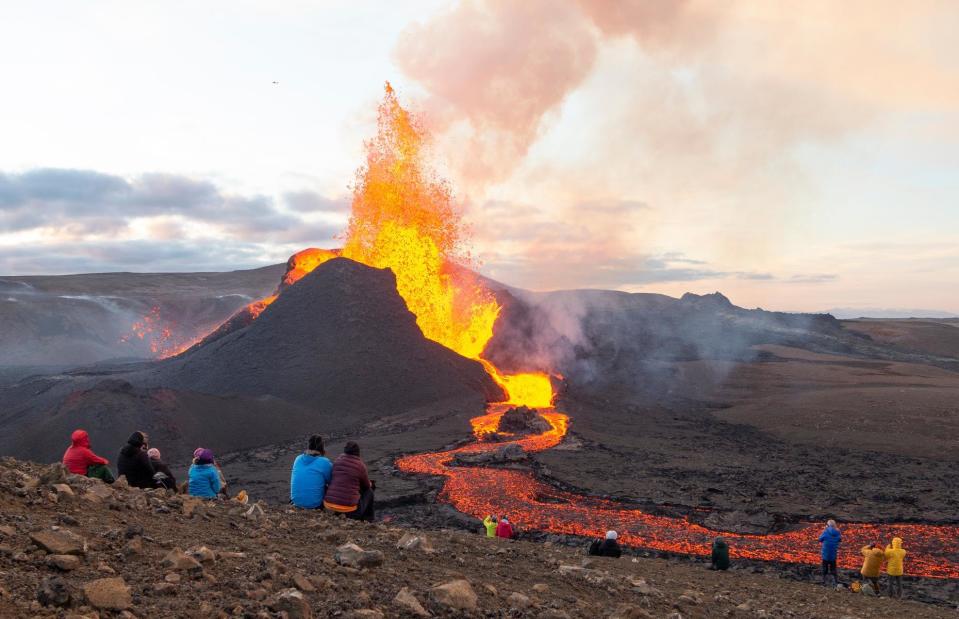
Thorir Ingvarsson/Shutterstock
Looking for an adventure with a heightened sense of danger? From high peaks and perilous pathways to deadly dive sites and boiling-hot lakes, some of the world's most beguiling attractions and destinations are also the most treacherous.
Here are some places that should be on only the most intrepid explorer’s hit list.
Cape Town, South Africa
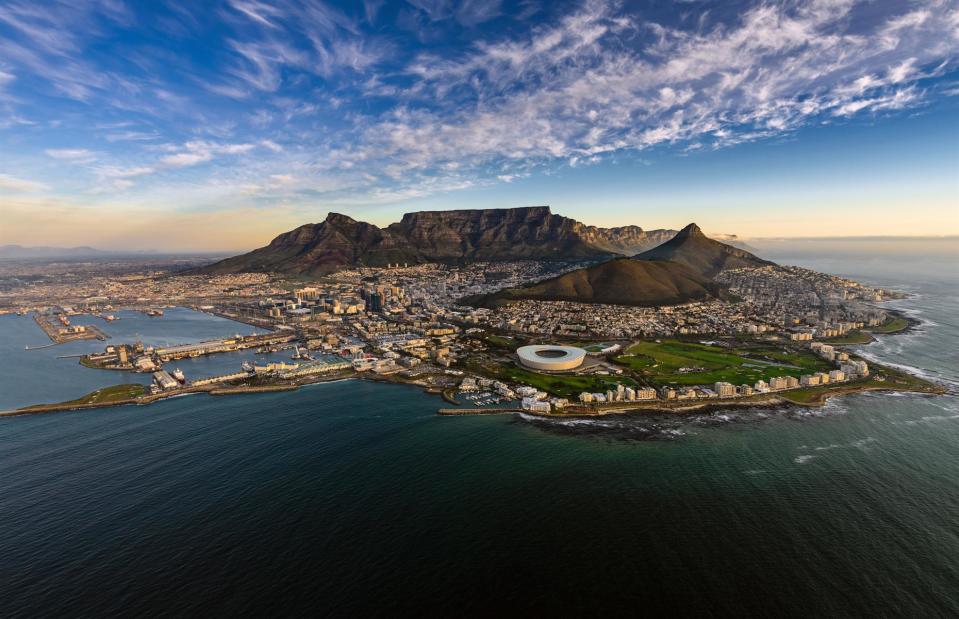
Alexcpt_photography/Shutterstock
South Africa’s best-known city, Cape Town, has many attractions that lure in travellers: flat-topped Table Mountain, beaches with great surf, a bustling harbour and an incredible food scene. However, according to data-gathering platform Statista, in 2023 Cape Town had the tenth-highest murder rate per 100,000 people in the world. In August 2023, a British surgeon was shot and killed after his vehicle took a wrong turn near Cape Town International Airport.
Cape Town, South Africa
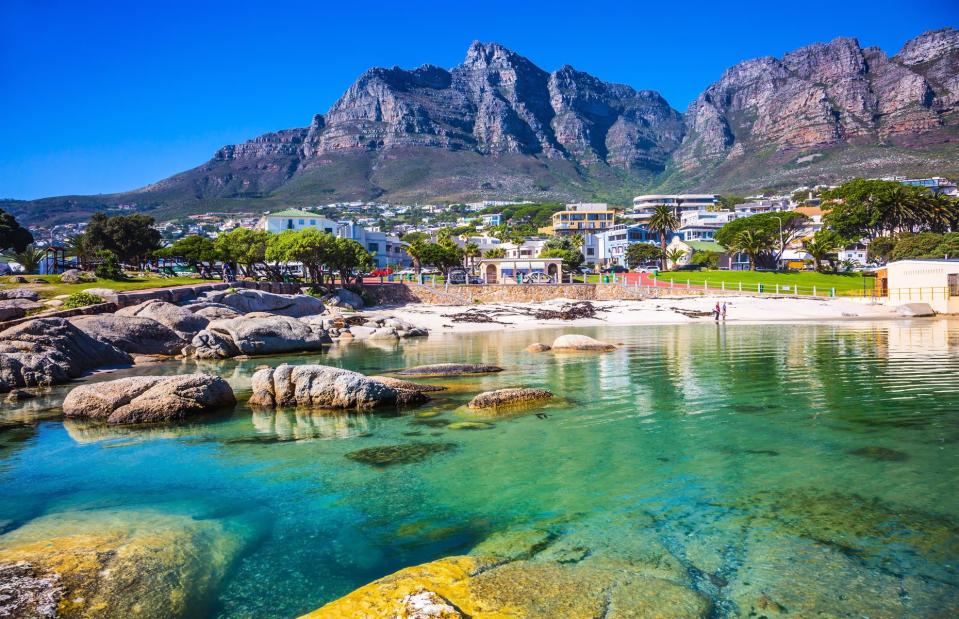
kavram/Shutterstock
Cape Town has been experiencing a spate of protests and demonstrations recently, which can turn violent. South Africa in general has a high violent crime rate, so visitors are advised to take plenty of precautions when visiting, from avoiding going out after dark to ensuring no valuables are on show.
Darien Gap, Central America
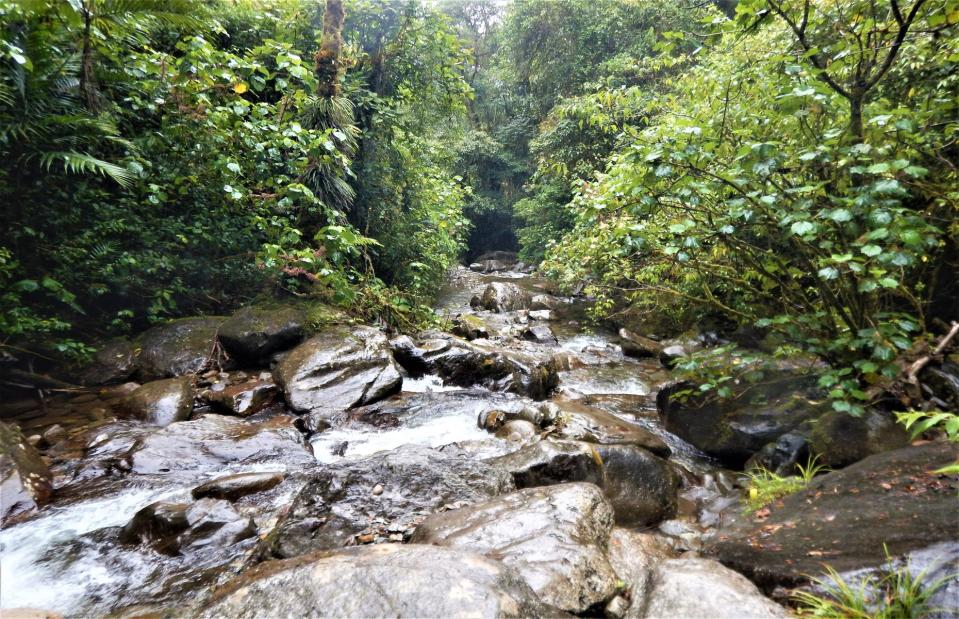
UrbanUnique/Shutterstock
The Darien Gap is an area of dense, mountainous jungle on the Panama-Colombia border. It’s both beautiful and biodiverse, with at-risk species such as jaguars and Central American tapirs roaming its rainforests. The near-impassable region also marks the only break in the 19,000-mile (30,000km) Pan-American highway, which otherwise stretches from Alaska to southern Argentina, and its remote location is a breeding ground for danger.
Darien Gap, Central America
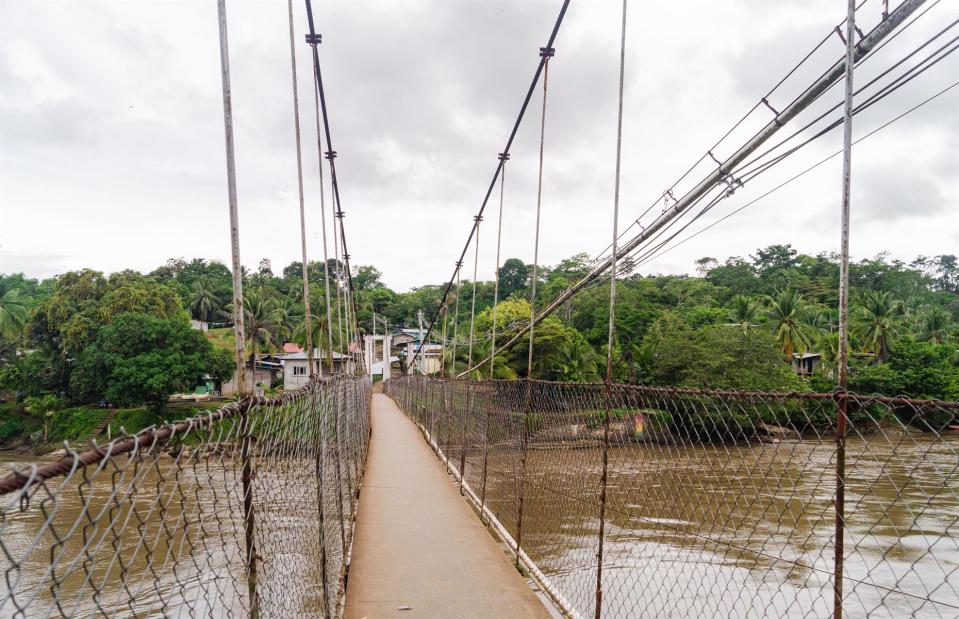
butabanatravel/Shutterstock
As well as river rapids, impenetrable rainforest, poisonous spiders and venomous snakes, travellers may also have to contend with gun-toting guerilla groups, drug gangs and human traffickers. In 2022 alone, 137 migrants died attempting to cross the gap from Colombia, while tourists have also died trying to pass through. In 2013, a Swedish hiker was murdered there by the Revolutionary Armed Forces of Colombia.
Skeleton Coast, Namibia
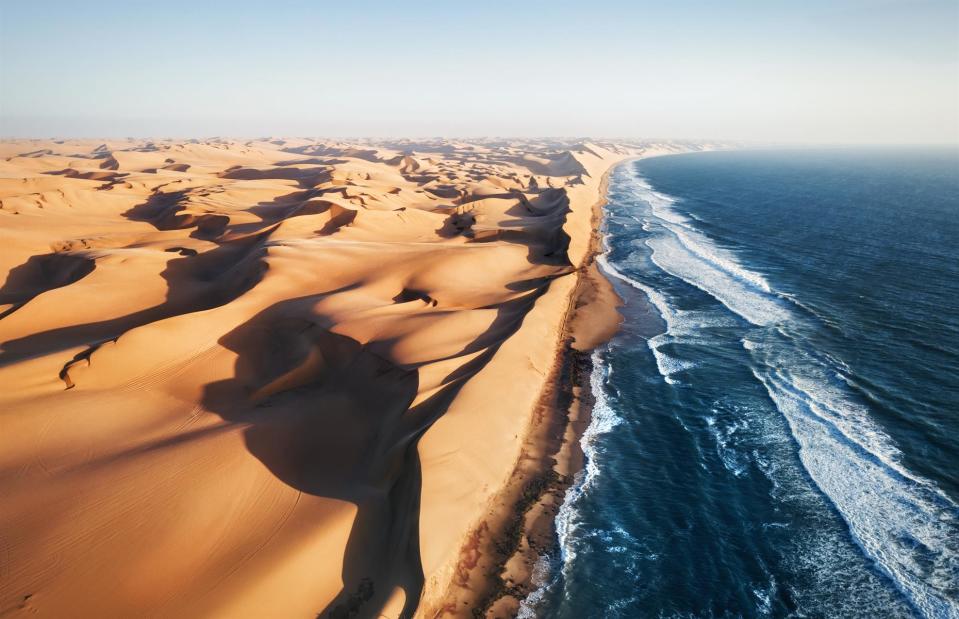
Smelov/Shutterstock
Stretching for 310 miles (500km) along the shores of northern Namibia, the Skeleton Coast is where the barren sand dunes of the Namib desert meet the vast Atlantic Ocean. Its otherworldly landscape, littered with the dry bones of dead animals and the rusting hulks of over 500 shipwrecks, is an attractive prospect for adventure travellers and intrepid photographers. But going deep into one of the world’s most inhospitable places comes with risks.
Skeleton Coast, Namibia
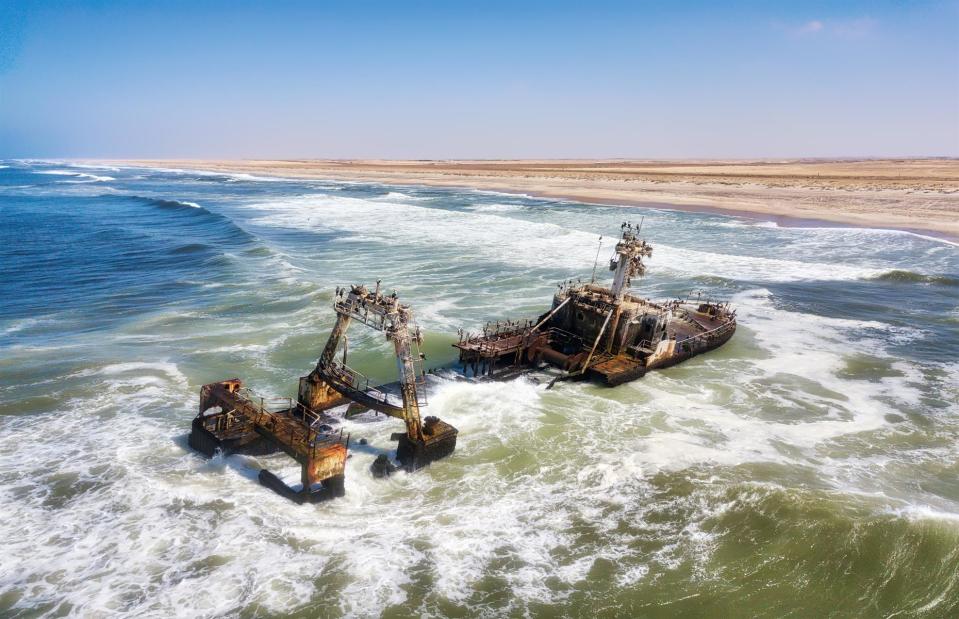
Lukas Bischoff Photograph/Shutterstock
The thick fogs, fierce winds and rough seas mean that ships stay away from the Skeleton Coast – for if they run aground, sailors may die of thirst before help reaches them. The Skeleton Coast is now a national park, but entrance to the northern section is strictly forbidden and it can only be seen via helicopter tour. The southern part is open to four-wheel drive vehicles, but going with an experienced guide is highly recommended.
Danakil Depression, Ethiopia
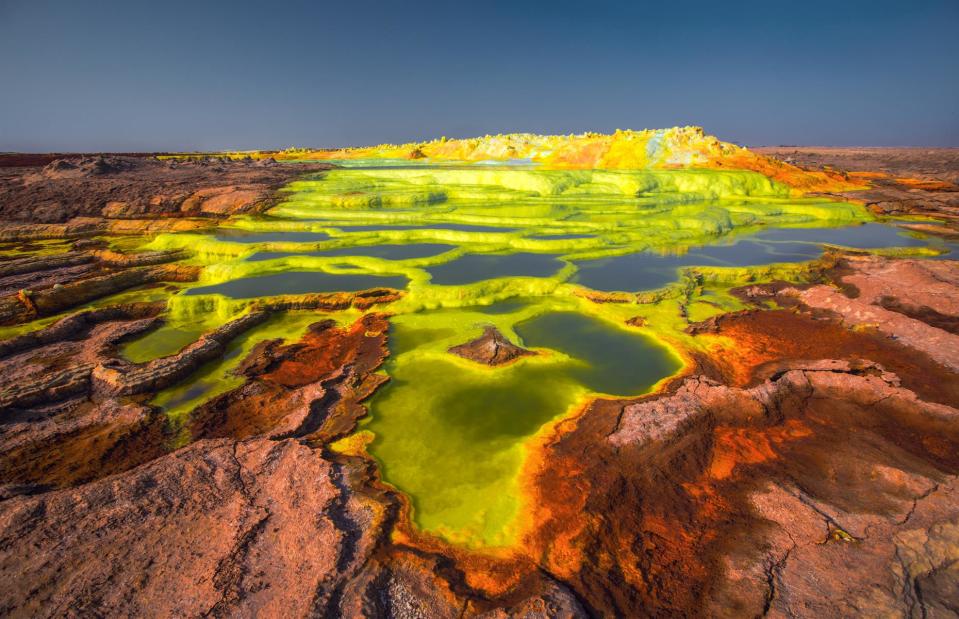
Michail_Vorobyev/Shutterstock
Though Death Valley takes the title of 'hottest place on Earth', Ethiopia’s Danakil Depression comes pretty close. At 400 feet (121m) below sea level, it’s one of the lowest places in the world, but its volcanic geology also makes it one of the most volatile. Sulphurous hot springs, simmering fissures and lava lakes make putting a foot wrong incredibly perilous.
Danakil Depression, Ethiopia
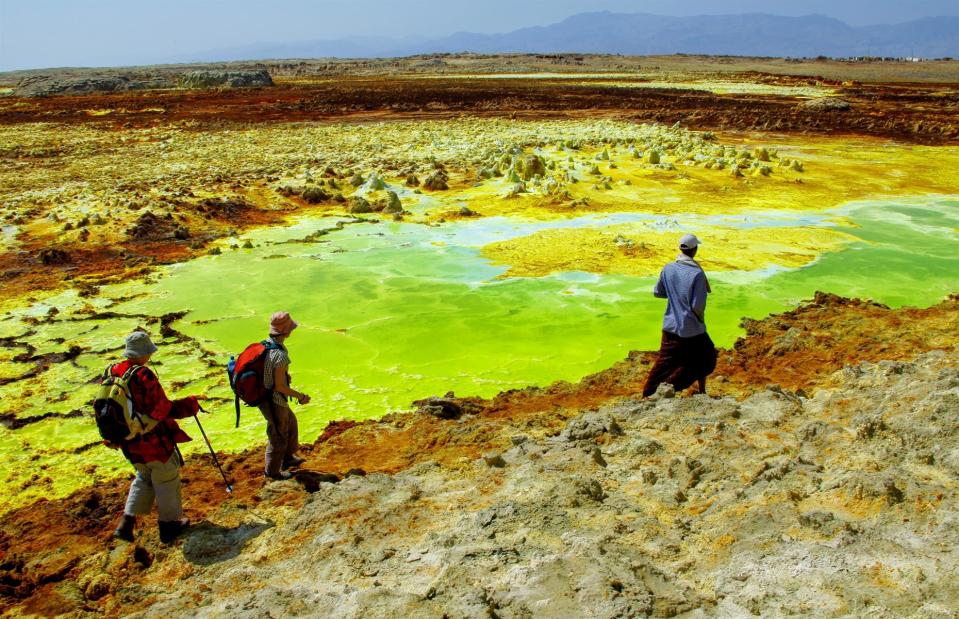
Tanguy de Saint-Cyr/Shutterstock
Daily temperatures often reach up to 45°C (113°F) and there’s no fresh drinking water available, so travellers must come prepared. Plus, the conflict in Ethiopia’s nearby Tigray region means that many countries – including the UK – advise against all but essential travel to much of the Danakil region.
Snake Island, Brazil
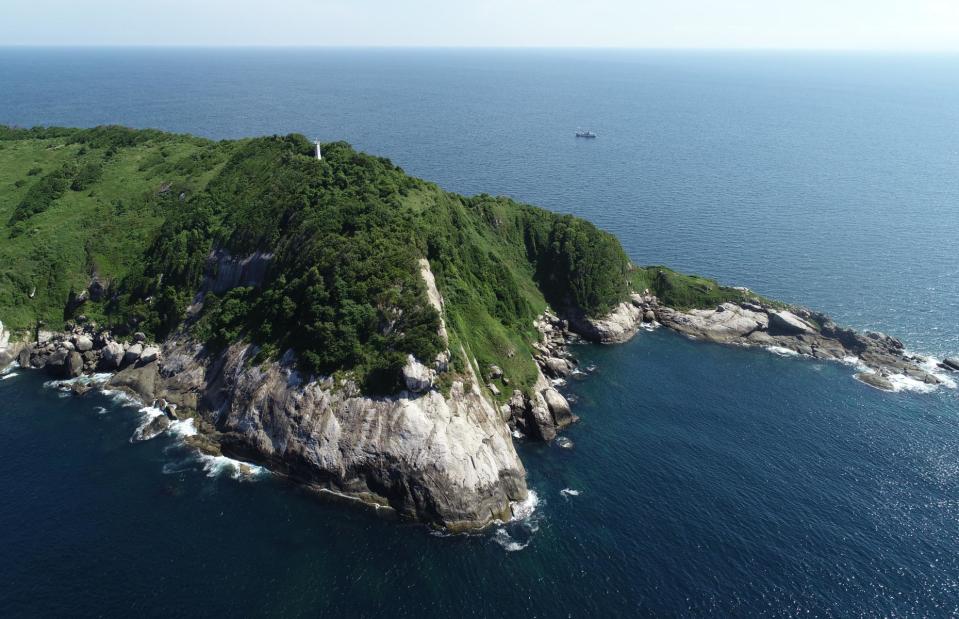
Marinha do Brasil/Flickr
Standing on Sao Paolo’s waterfront, you’ll see a small, forested island on the horizon, around 21 miles (33km) away. Ilha da Queimada Grande might look harmless, but its residents aren’t. The island is home to a population of around 3,000 snakes – Golden Lancehead pit vipers, to be precise. That could mean as many as five snakes per square metre lurk in the grass.
Snake Island, Brazil
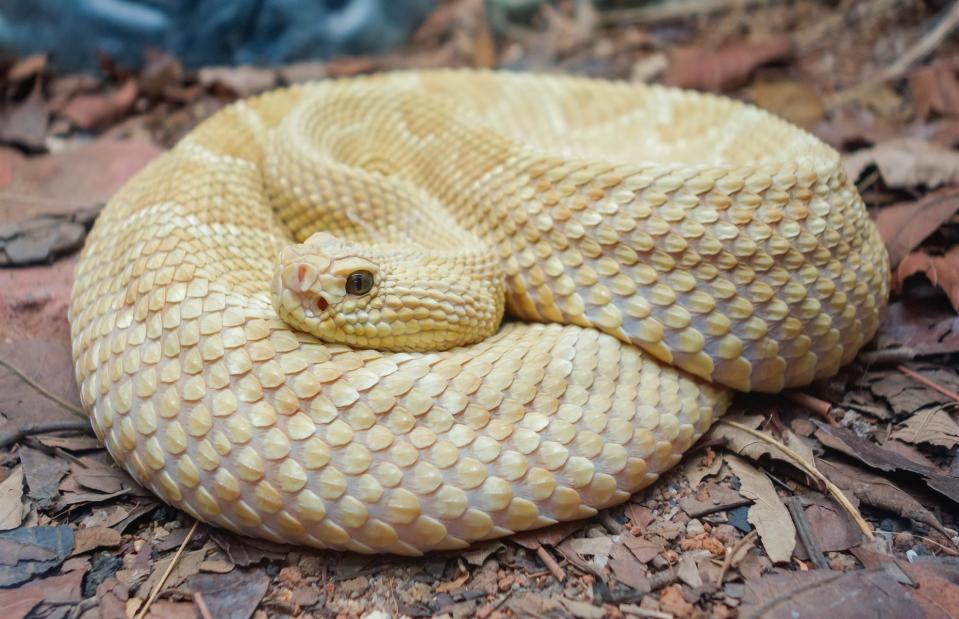
caioacquesta/Shutterstock
Lancehead snakes (the Golden Lancehead's mainland cousin) are responsible for around 90% of all snakebites in Brazil, but although the venom can be deadly no deaths have been reported here: the Brazilian government bans anyone from setting foot on Ilha da Queimada Grande. This measure is also for the benefit of the snakes, which are part of a captive breeding programme on the mainland.
Lake Natron, Tanzania
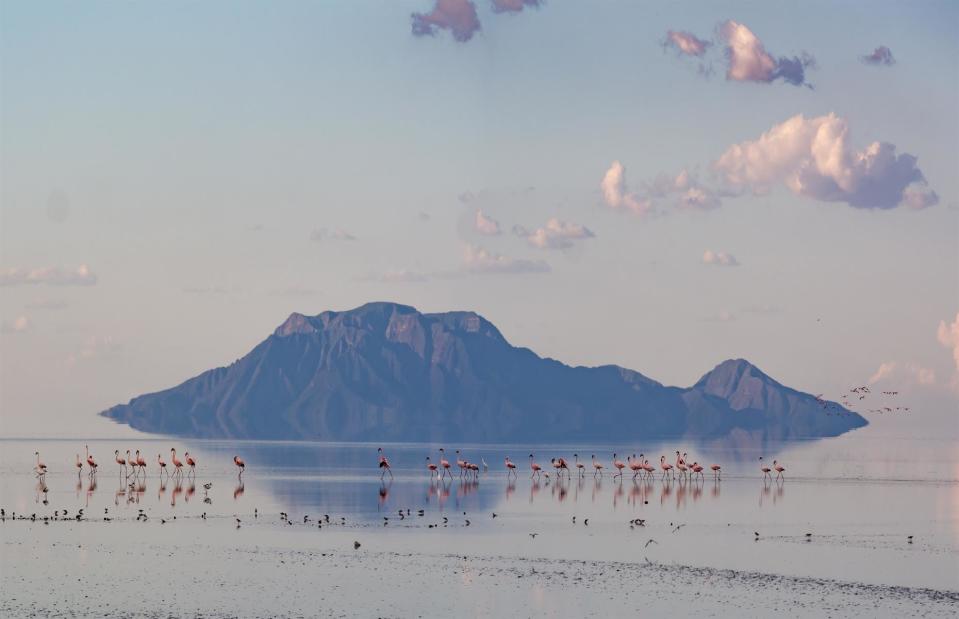
matthiasmoeller/Shutterstock
Close to Tanzania’s border with Kenya is Lake Natron, a highly alkaline lake that sometimes turns a blood red hue thanks to the algae that live on its surface. High salinity means its waters grow toxic cyanobacteria, so the lake is harmful to most animals – except flamingos, which are able to digest the bacteria. This means the birds can thrive without other avian competition.
Lake Natron, Tanzania
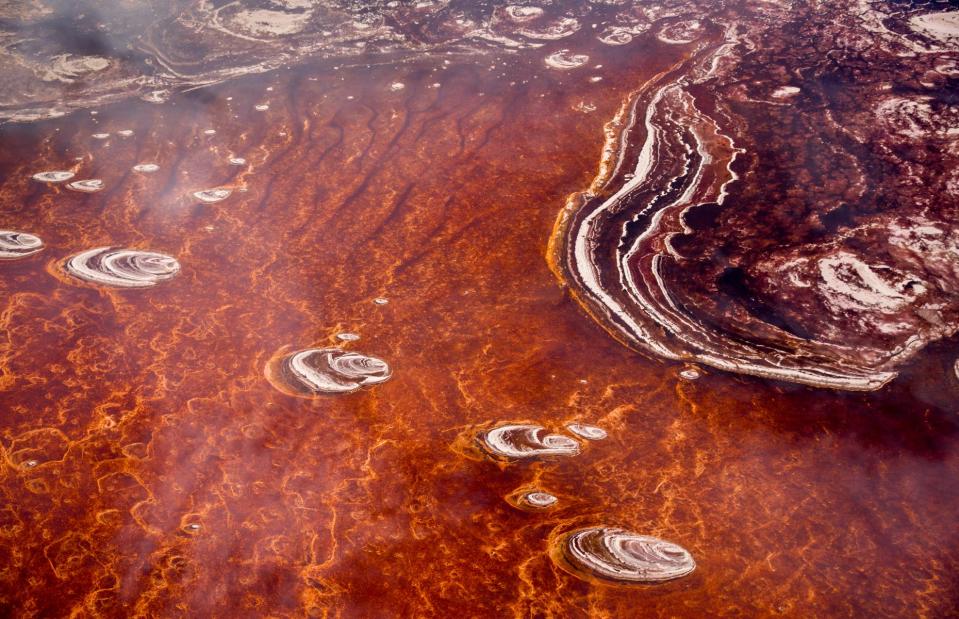
Danita Delimont/Shutterstock
The lake has a pH of up to 10.5, an alkalinity so high it can burn the skin and eyes of people and animals. The water can also run incredibly hot, with temperatures reaching 60°C (140°F) in the summer. Dipping your toes into the still water is extremely ill-advised.
K’gari (Fraser Island), Australia
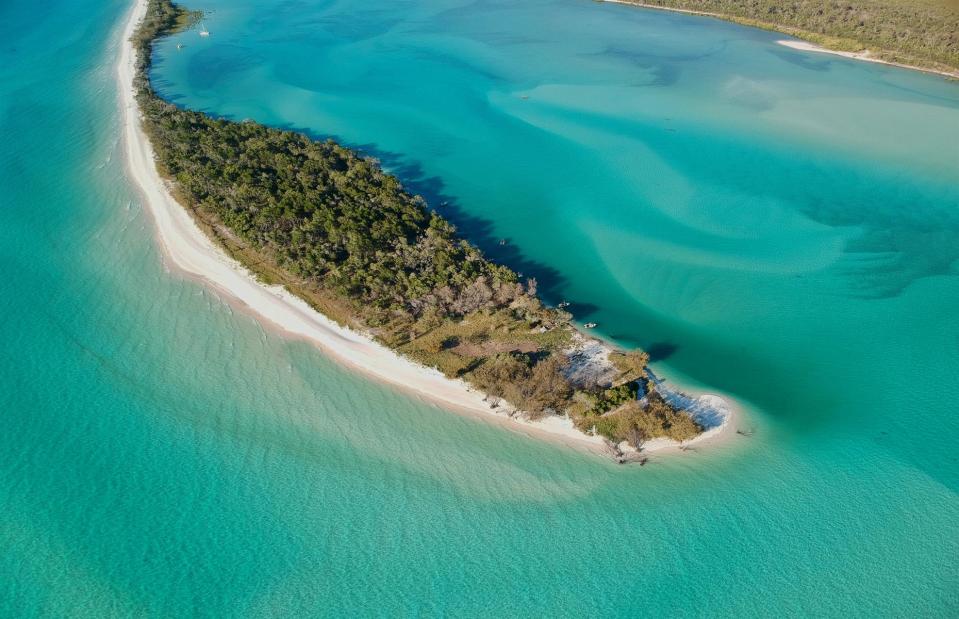
Guillem Lopez Boras/Shutterstock
This UNESCO-listed island in subtropical Queensland is a huge tourist hotspot, renowned for its castaway beaches, rainforests and huge array of wild animals, including dingos. However, the dingos are known to attack humans and such incidents are on the rise; in 2023, a pack attacked and injured a woman who was jogging on the beach.
K’gari (Fraser Island), Australia
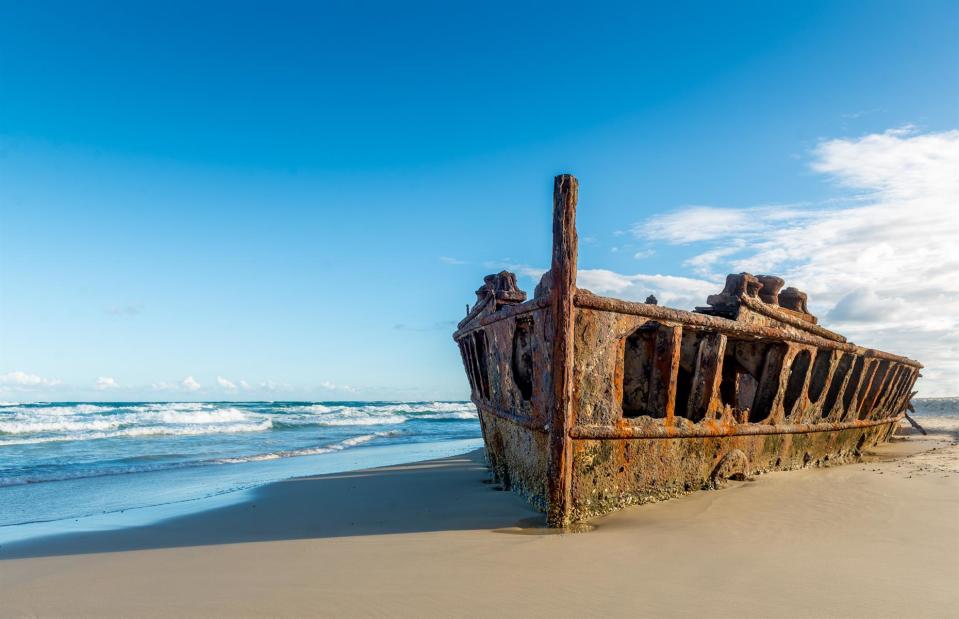
Troy Wegman/Shutterstock
Other dangers abound on K’gari (formerly known as Fraser Island), including great white sharks and stinging jellyfish, rip tides that can dash swimmers on the rocks and sand dunes that can shift beneath your feet. There are no lifeguards or doctors on Fraser Island, so getting help in an emergency can be very difficult.
Death Valley, California, USA
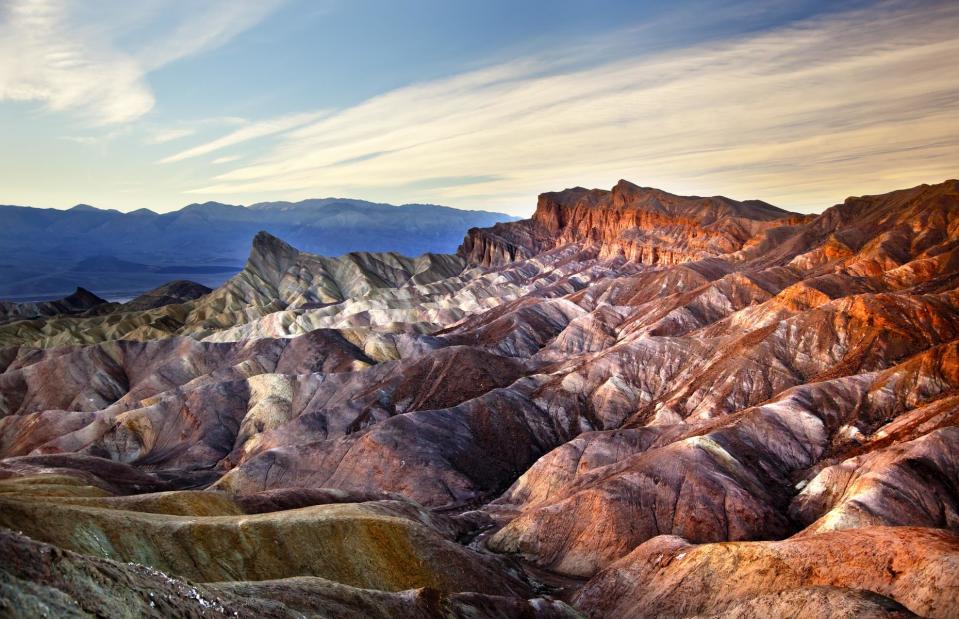
Bill Perry/Shutterstock
Deadly hot but drop-dead gorgeous, Death Valley National Park lures visitors with its surreal landscape of undulating sand dunes, rock-salt spires and salt flats. But it’s wrought with hazards from extreme heat and flash floods to rattlesnakes, scorpions, black widow spiders and a chance of stumbling into illegal marijuana cultivation sites.
Death Valley, California, USA
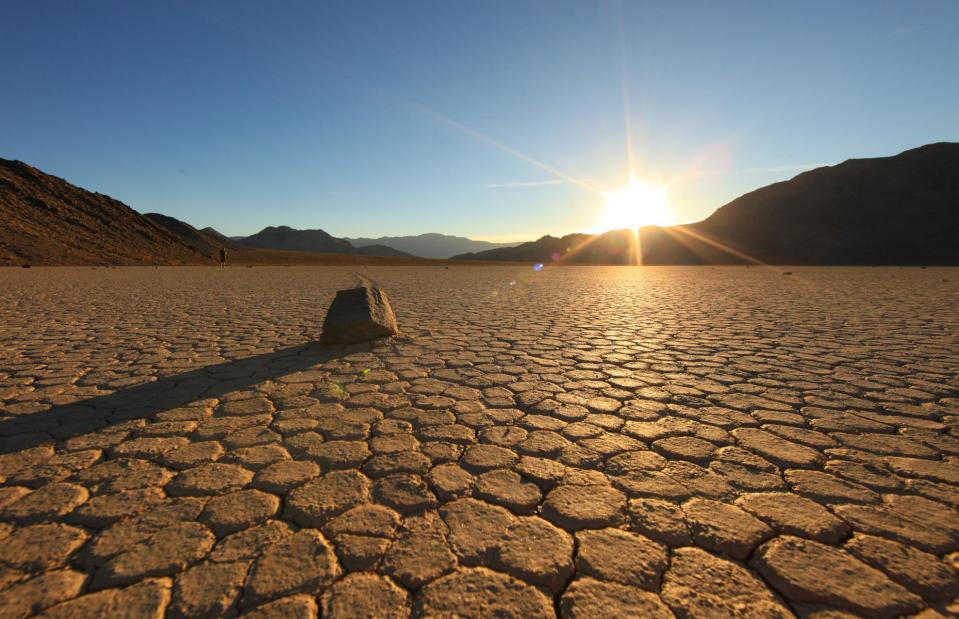
Katrina Brown/Shutterstock
As the hottest and driest place in America, there have been numerous heat-related fatalities in Death Valley, which was given its foreboding name by a group of pioneers who got lost in the remote wilderness in the 19th century. The US National Weather Service measured a record temperature of 54.4°C (130°F) in Furnace Creek in July 2021. However, according to the National Park Service, the main cause of death in the park is driving, with single-car accidents causing the most fatalities.
Darvaza Gas Crater, Turkmenistan
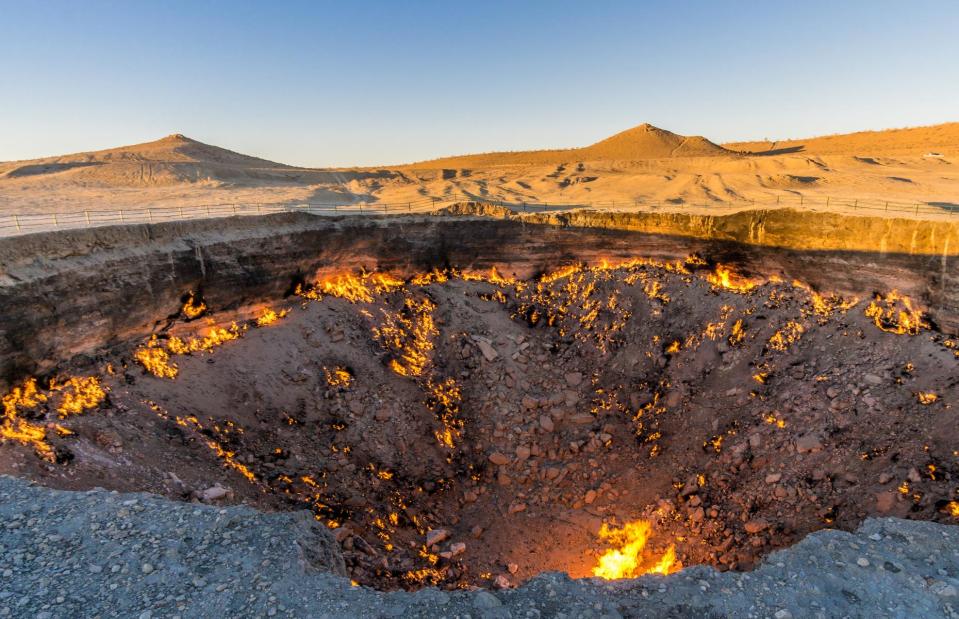
AlexelA/Shutterstock
The frisson of fear associated with peering over the edge of a fiery cavernous pit has made Turkmenistan’s Darvaza Gas Crater another unlikely attraction. Known as the 'Gates of Hell', the flaming inferno formed in the Seventies when Soviet geologists drilled into a cave for oil, causing its natural gas field to collapse. They set it alight to burn off the toxic gas. Decades later and it’s still blazing away beneath the barren landscape of the remote Karakum Desert.
Darvaza Gas Crater, Turkmenistan
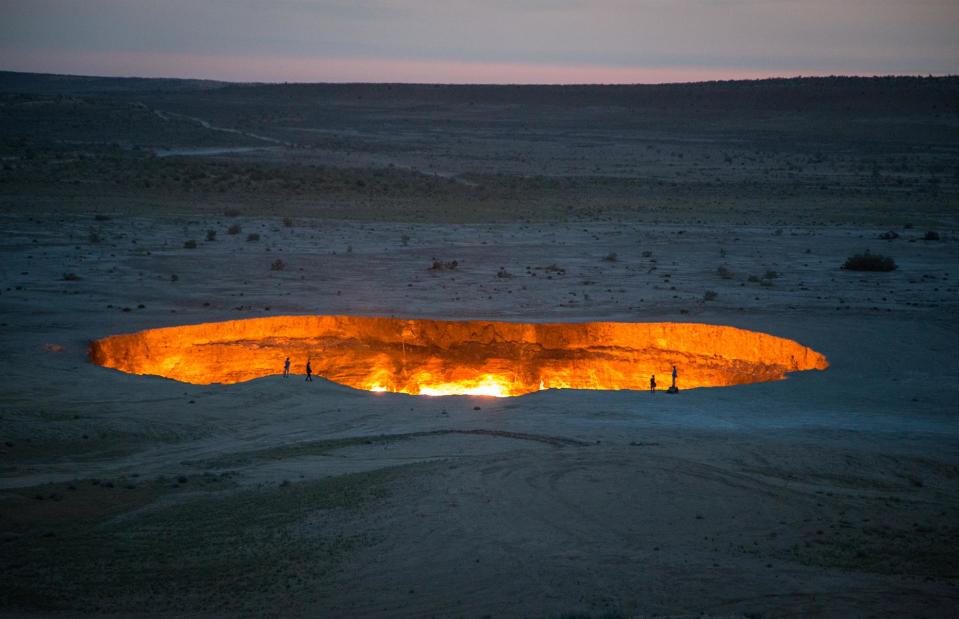
Iwanami Photost/Shutterstock
The strange spectacle is at its most striking at night, when the flames lick out of the pit and light up the dark desert sky. Tour groups can camp nearby the blazing chasm, around which a fence was erected in 2018 to stop tourists getting too close to the extraordinary but dangerous sight.
Karijini National Park, Australia
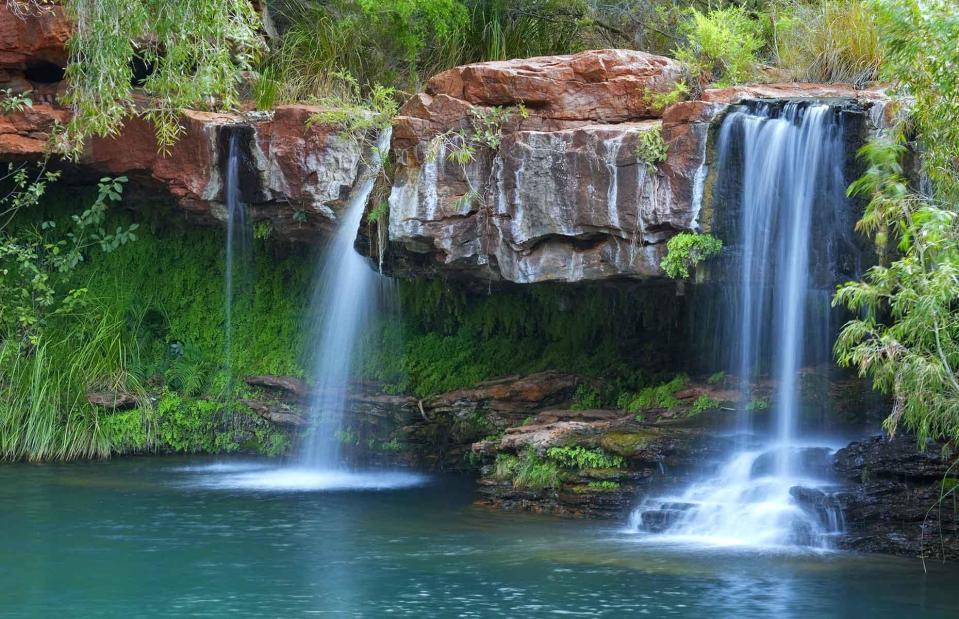
Sara Winter/Shutterstock
A collection of emerald pools, cascading waterfalls and craggy red gorges, Karijini National Park is the Australian outback at its most wild and beautiful. But beware, this remote part of Western Australia is prone to extreme weather conditions including dangerously high temperatures and flash flooding. The hazardous roads, lure of plunging into the cool deep water and rockfalls have also led to fatalities.
Karijini National Park, Australia
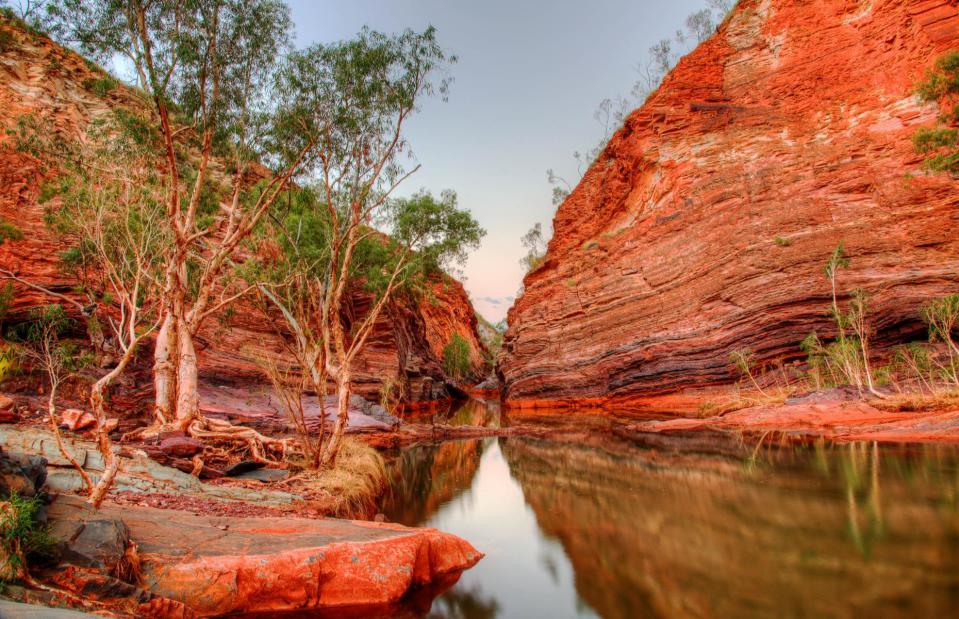
Tim Pryce/Shutterstock
Thankfully, Karijini's enticing waters are crocodile-free as it’s too far inland for the predators – but you may find yourself coming close to a snake or two. A woman was bitten by a highly venomous king brown snake in 2022. The gorge walk from Hancock to Weano Gorge – known as Miracle Mile – was once a test of endurance for Perth schoolboys and more recently a favourite backpacker challenge. Access to this precarious route through the gorges is now restricted but people can join canyoning tours down into the hidden crevices and rock pools.
Mount Huashan, China
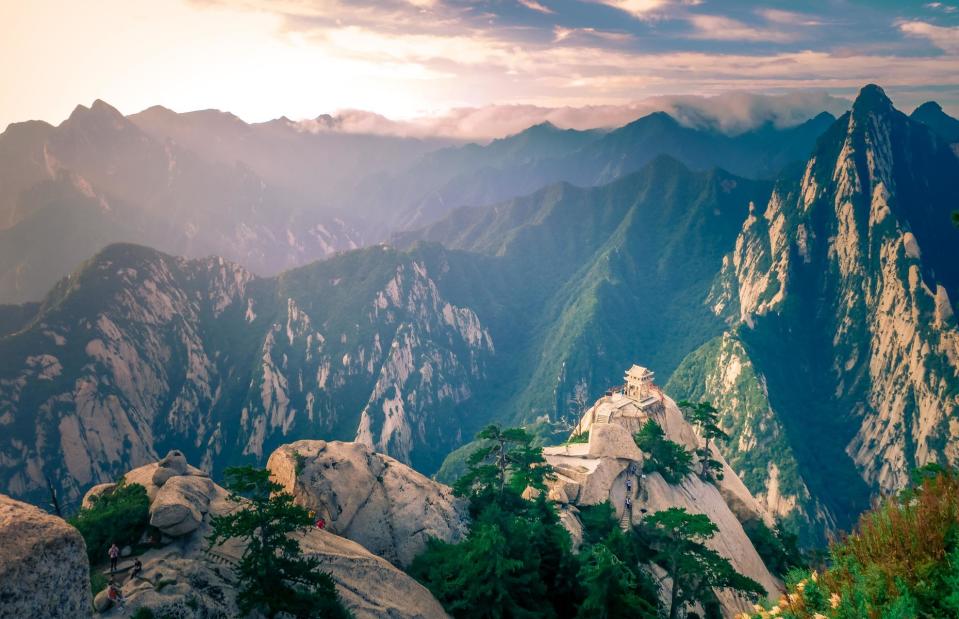
ThewayIsee/Shutterstock
The sacred Mount Huashan in northwest China’s Shaanxi province has long been a place of pilgrimage thanks to its mystical five peaks and Taoist temples but modern visitors flock here for a thrill of a different kind – completing one of the world’s deadliest hikes.
Mount Huashan, China
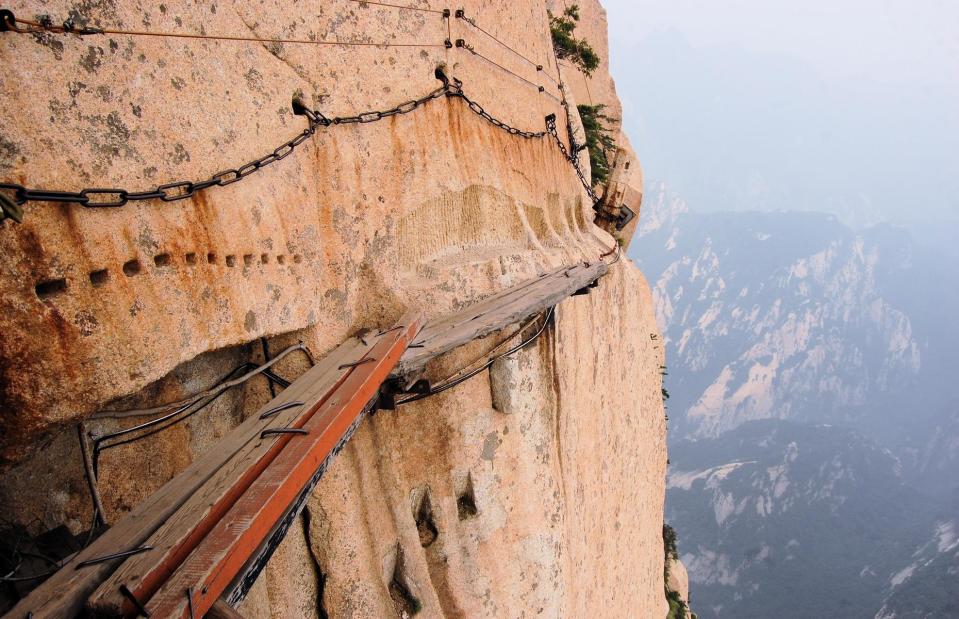
Flocu/Shutterstock
A network of trails snake around the mountain, including steep stone steps. But it's the infamous Plank Path – narrow and rickety planks bolted onto the sheer mountainside around 5,000 feet (1,524m) in the sky, only navigable with a safety harness – that is the most treacherous stretch. Sadly, a university student died after falling from the path, which is bolted onto the eastern side of South Peak, in 2019.
Skellig Michael, Ireland
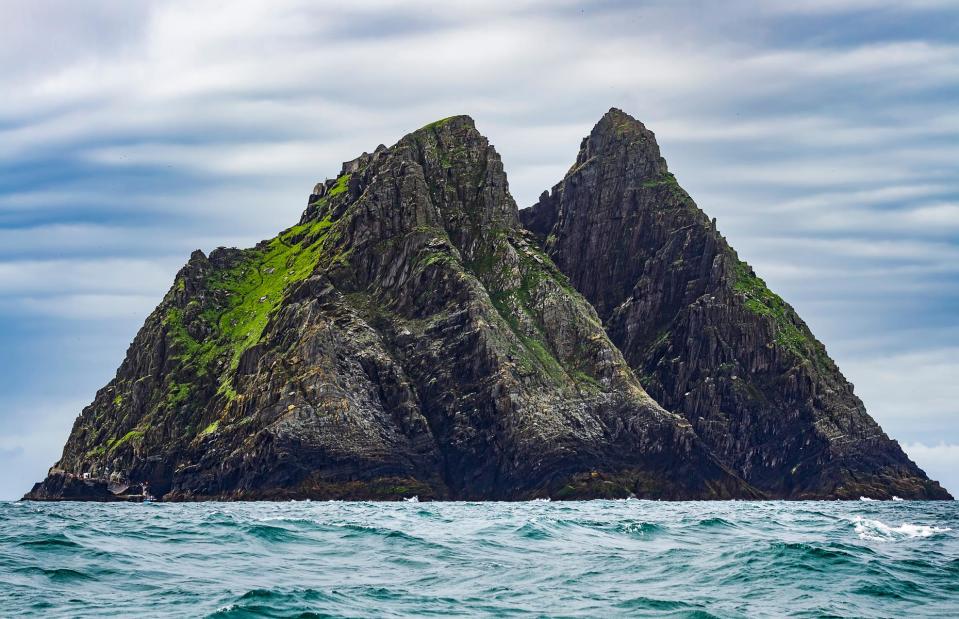
ladipictures/Shutterstock
Rising out of the thrashing Atlantic waters, Skellig Michael is a craggy isle off the coast of County Kerry that was once the windswept home of hardy monks. Since it was used as a filming location for Star Wars VII: The Force Awakens, the intriguing isle has become even more alluring. It’s a tough climb up roughly-hewn, steep stone steps to see the ruins of the ancient monastery that perch near the top.
Skellig Michael, Ireland
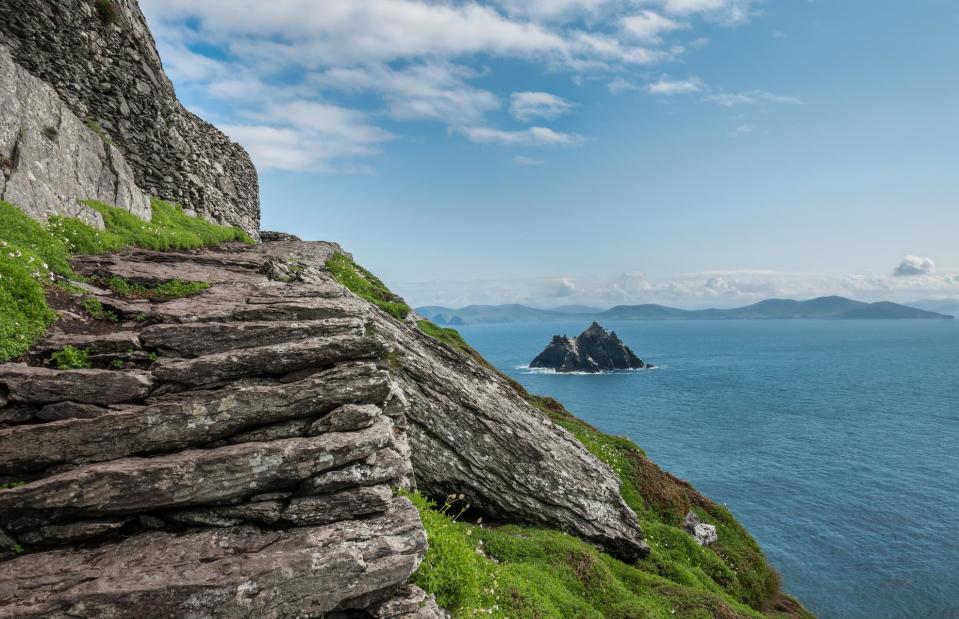
Eoinsm/Shutterstock
With no handrails, sheer drops and rockfalls, the route can be treacherous with some climbers having fallen to their death. While safety measures have increased, including limiting visitor numbers, it is still a dangerous place to access. Rough weather often prevents boat crossings too. Those that do make the knee-knocking ascent are rewarded with majestic views across to Little Skellig – home to the world’s largest gannet colony.
Villarrica, Chile
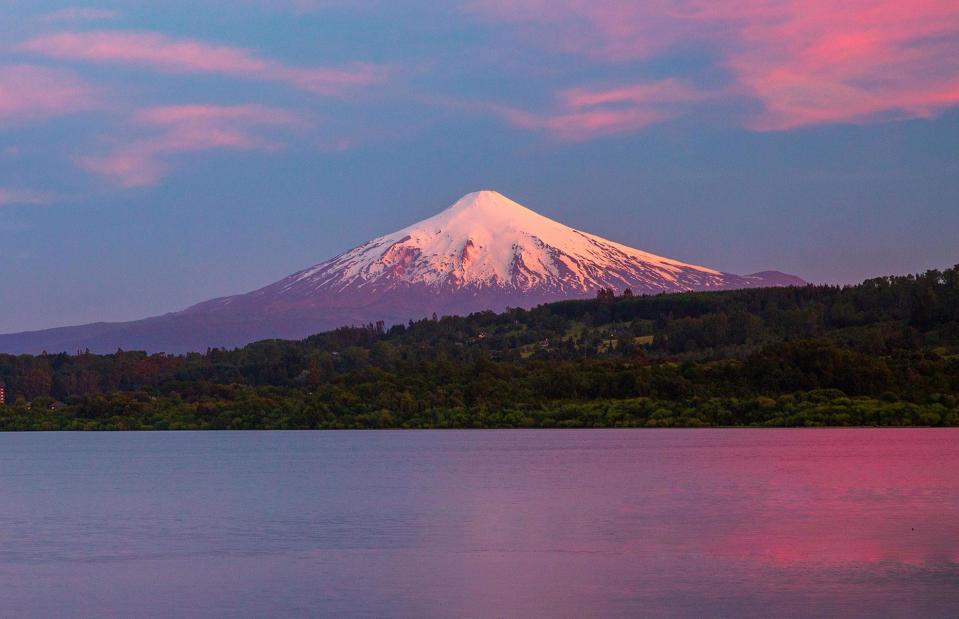
Vaclav Sebek/Shutterstock
It might look pretty, but beware: the snow-capped peak of Villarrica is one of South America’s most active volcanoes. Rising above the lake and town of the same name in southern Chile, it erupted as recently as 2015, spewing ash and lava high into the air and causing a mass evacuation in the area. Increased activity was also seen in early 2023, with steam and volcanic gases spewn into the air.
Villarrica, Chile
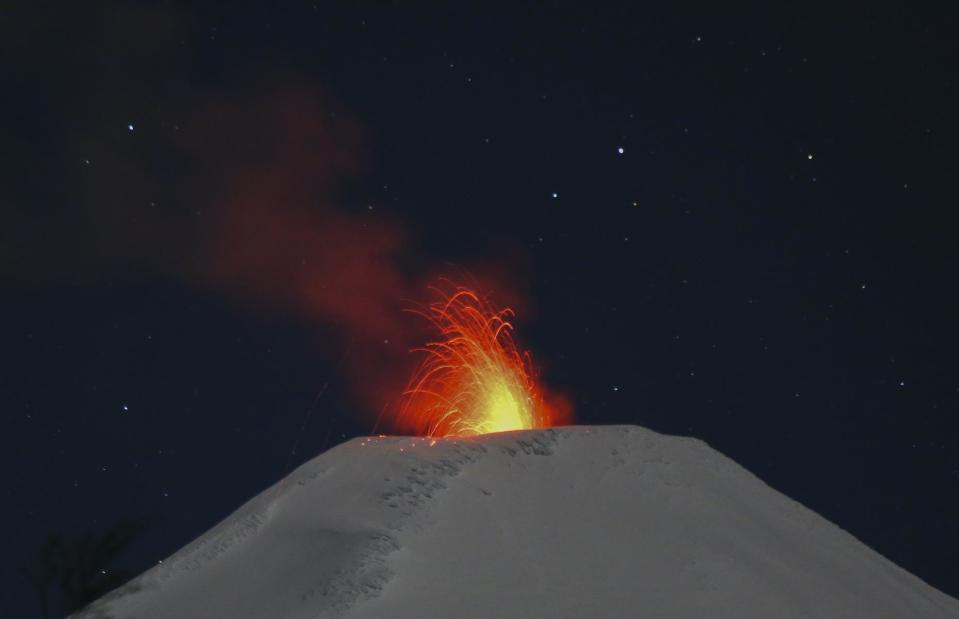
SEBASTIAN ESCOBAR/AFP/Getty Images
Despite the recent seismic activity, Villarrica remains popular with adventurers who hike up the treacherous peak to peer at the cavernous steaming crater at its summit. Looming near the popular tourist resort of Pucón, the volatile volcano's snow-clad slopes are also popular with daredevil skiers in winter.
Cliffs of Moher, Ireland
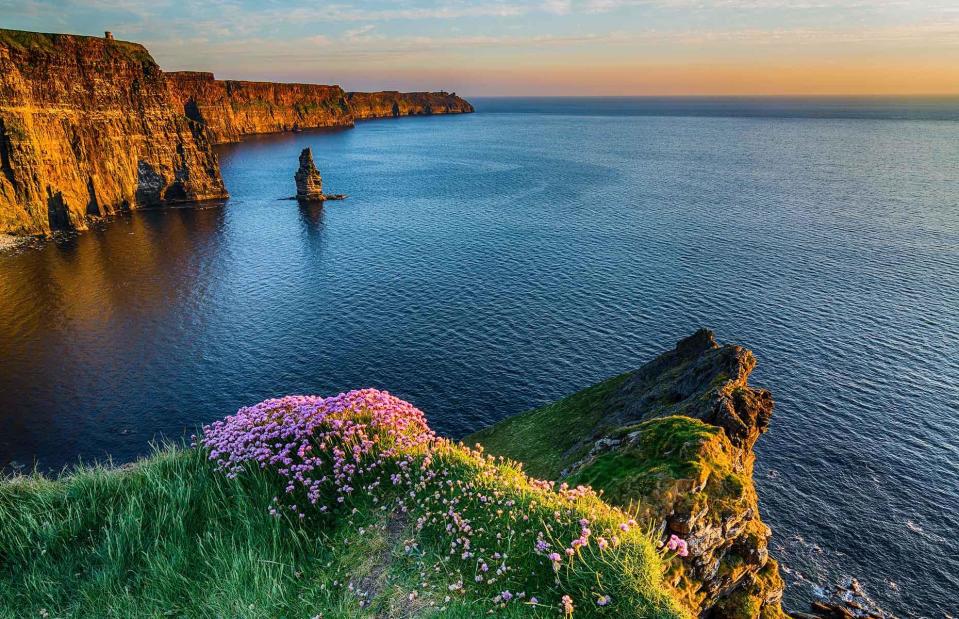
shutterupeire/Shutterstock
The Cliffs of Moher are one of Ireland’s most lauded sights, drawing tourists to drink in the dramatic scenery, enjoy the abundant birdlife and peer across to the rocky Aran Islands on a clear day. The cliffs’ weathered expanse unfolds for five miles (8km), reaching more than 700 feet (213m) at its highest point.
Cliffs of Moher, Ireland
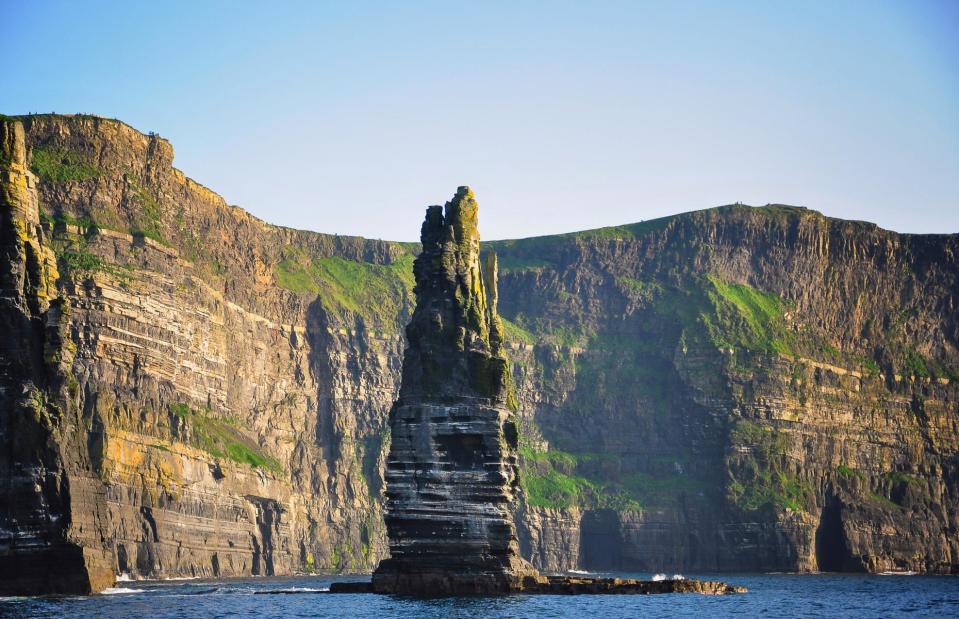
svetok30/Shutterstock
But with great height comes great danger and the clifftop’s dramatic brink has caught explorers off guard before. More than 60 accidental deaths have occurred here since the early 1990s, including a student falling to his death in 2019 after taking selfies near the cliff's edge. Portions of the cliff are also liable to collapse, so it’s wise to heed those signs urging you to stay back.
Half Dome, California, USA
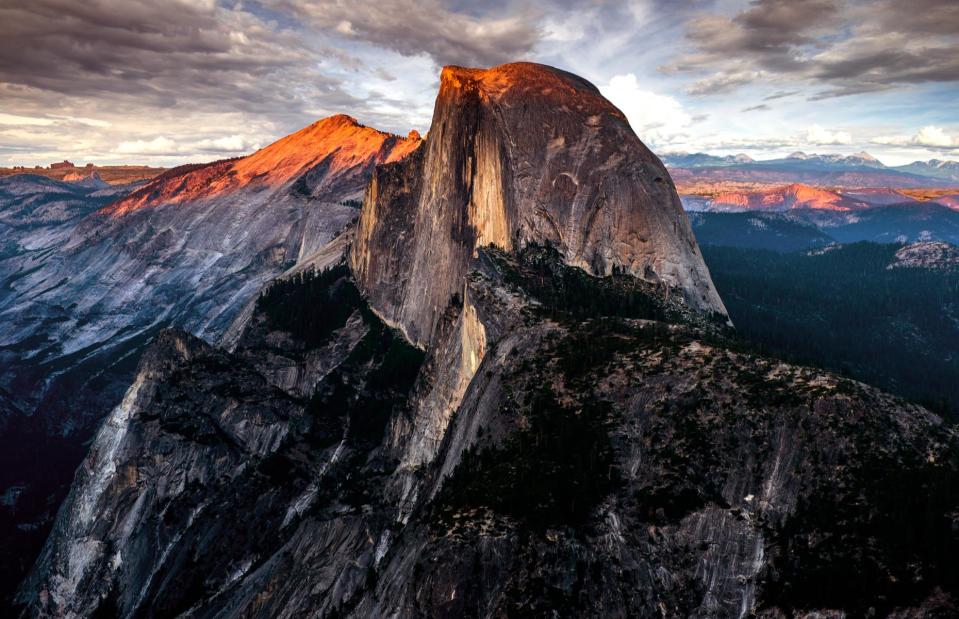
Pung/Shutterstock
Looming above Yosemite National Park, Half Dome lures thousands of intrepid hikers every year determined to scale its curved summit. The 14-mile (22.5km) round trip to the top takes walkers into the wilderness and has a reputation for dangerous conditions – a hiker was killed in September 2019 after falling 500 feet (152m) while climbing. Rockfalls are also frequent and can be deadly. Not to mention Yosemite’s resident black bears.
Half Dome, California, USA
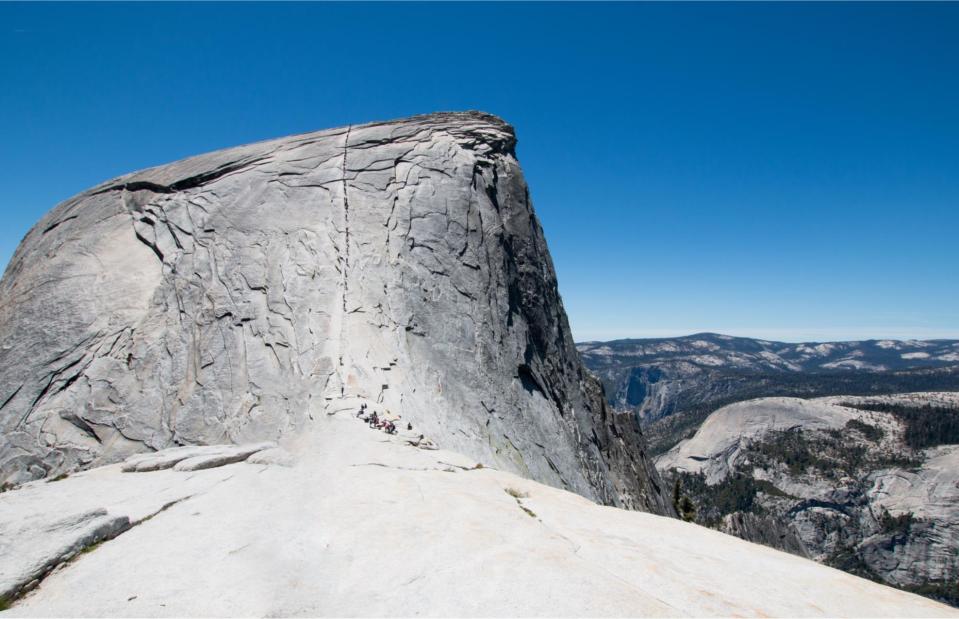
HTurner/Shutterstock
Having avoided hazards along the route, many hikers are defeated by the final incredibly steep stretch of the Half Dome trek, which involves ascending the summit using steel cables. At 8,800 feet (2,682m) above sea level, stamina and a head for heights are a must to conquer the peak. The successful hiker’s reward is the unparalleled views of the majestic Yosemite Valley below. Another of the national park's perilous peaks is El Capitan, a hulking granite rock formation that is seen as a pinnacle for free climbers.
El Caminito Del Rey, Spain
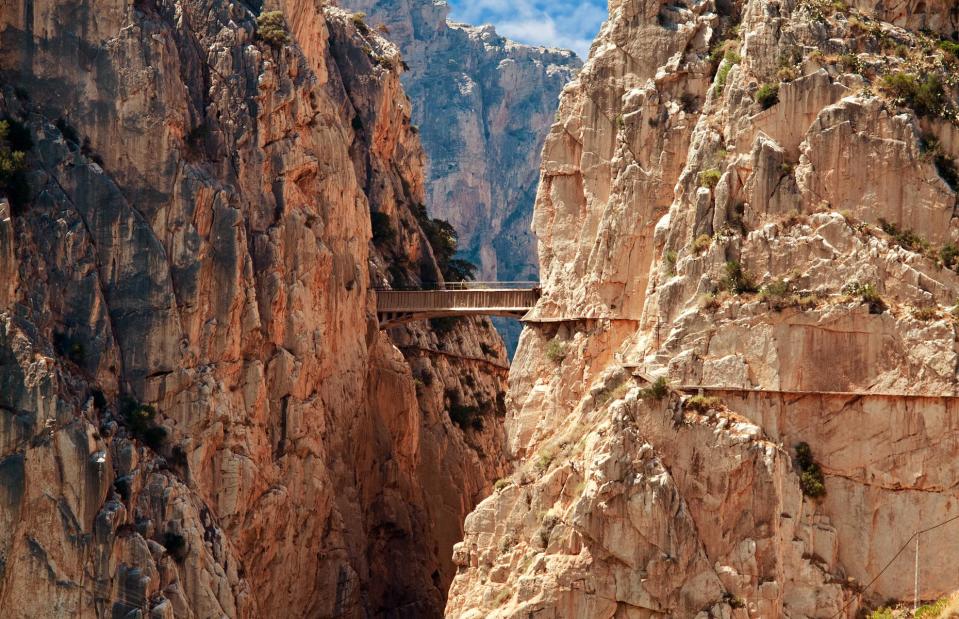
Migel/Shutterstock
Built between 1901-1905 for construction workers carrying goods to the Guadalhorce dam, this teetering walkway clings to Málaga’s El Chorro gorge. Now nicknamed the 'Walkway of Death', the sheer thrill factor of navigating the precarious path attracts adrenaline junkies from around the world. The route includes a rickety suspension bridge straddling the gorge, soaring almost 350 feet (106m) above the waters of the Guadalhorce River below.
El Caminito Del Rey, Spain
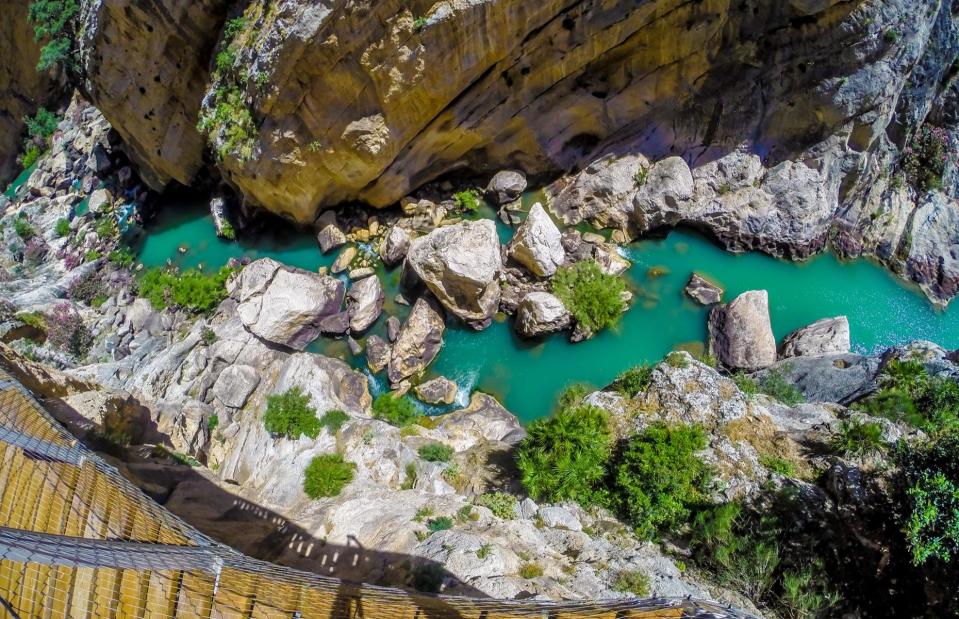
Romas_Photo/Shutterstock
Several hikers have plummeted to their deaths here over years: the walkway closed in 2001 for extensive restorations after five deaths occurred between 1999 and 2000. Following upgrades to the century-old path, which were completed in 2015 and new visitor restrictions, El Caminito Del Rey is much tamer (and safer) than it once was – but it still takes a lion-hearted traveller to brave such heights. A new visitor centre, opened in 2022, tells you everything you need to know about this formidable route.
Mont Blanc, France/Italy
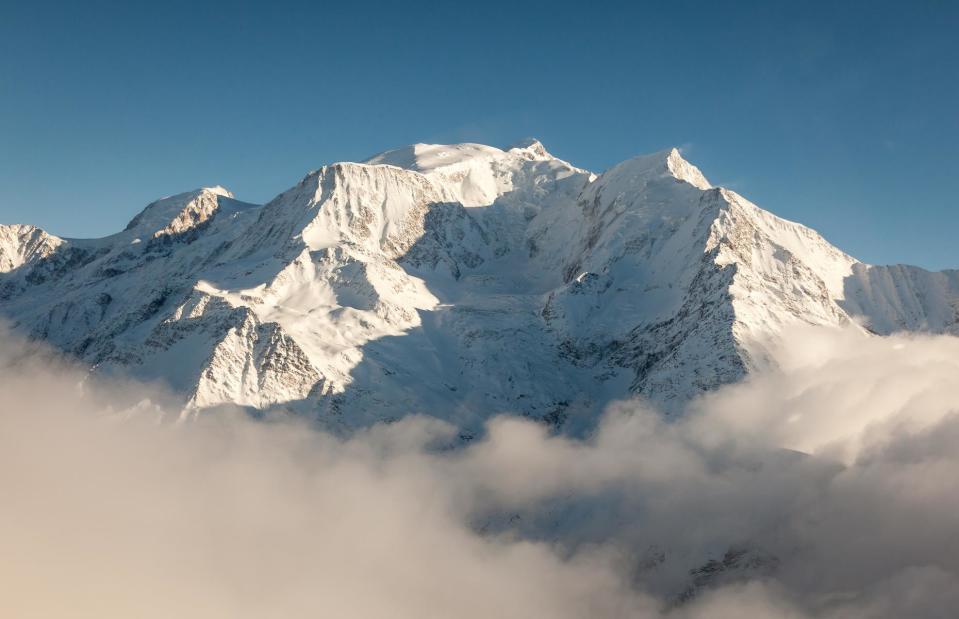
JJM Photography/Shutterstock
Mont Blanc is the loftiest peak in Europe, and its snow-cloaked slopes are a mecca for mountaineers. It reaches around 15,780 feet (4,809m) and some 30,000 people come to tackle the Mont Blanc massif annually. But despite its majesty, it’s regarded as one of the deadliest mountains in Europe.
Mont Blanc, France/Italy
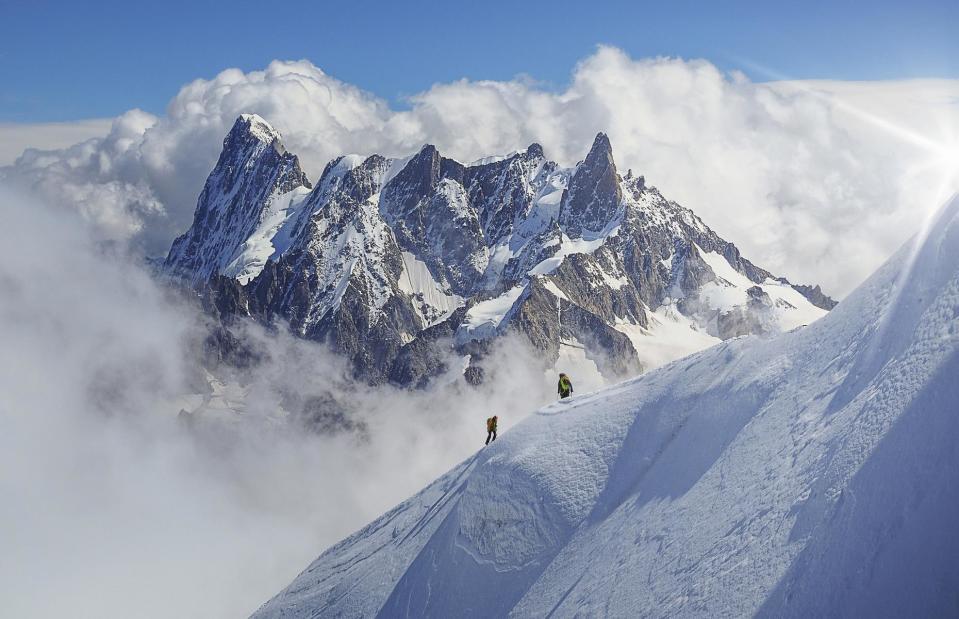
Chris Pelle/Shutterstock
Many of the accidents that occur during the region's climbing season are caused by Mont Blanc's treacherous terrain and changeable weather conditions, lethal if paired with a lack of adequate kit and preparation. But even the most experienced and well-prepared climbers can be caught out by the perilous peak. Overcrowding has also added to the danger – some sources claim it's the most fatal mountain in the world, claiming an average of one hundred lives per year.
Devil's Pool, Victoria Falls, Zambia/Zimbabwe
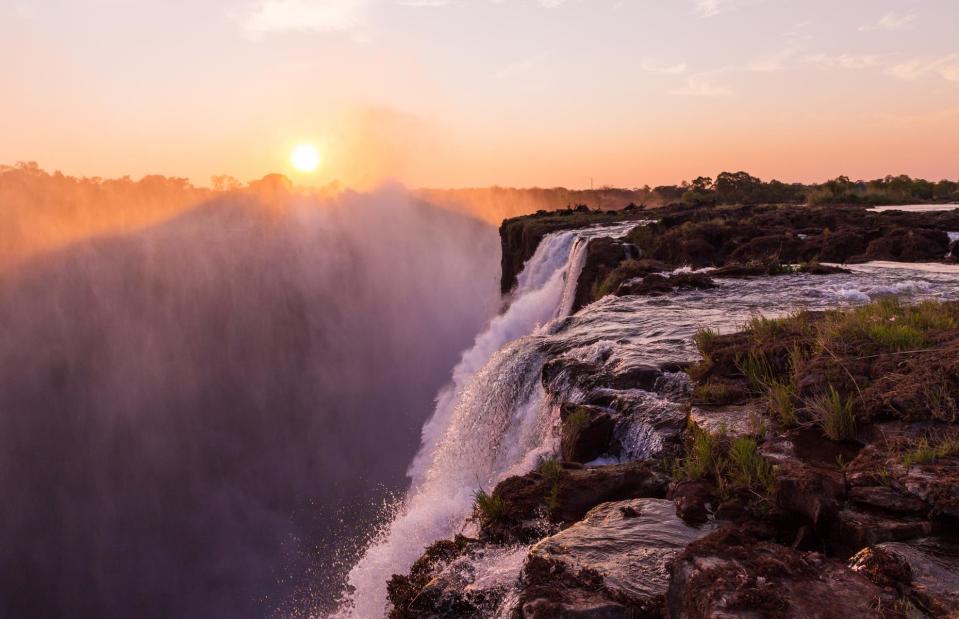
Stanislav Beloglazov/Shutterstock
Described by the Zambia tourist board as the “ultimate infinity pool”, the ominously named Devil's Pool sits right at the top of the thunderous Victoria Falls which the Zambezi River flows down. Swimmers take the plunge at their own risk – one wrong move and they could plunge from the precarious rock pool and down a sheer precipice into one of the world’s largest waterfalls.
Devil's Pool, Zambia
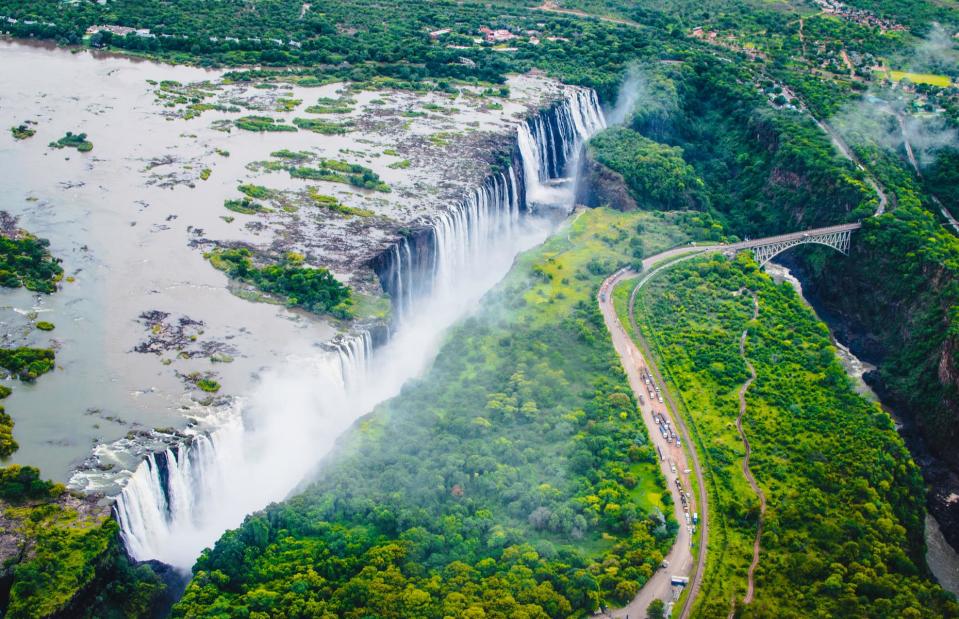
Yana Zubkova/Shutterstock
The pool is only accessible at certain times of the year, when the Zambezi River is low enough, with guides on hand to accompany people into the natural pool. Crocodiles and hippopotamuses are other possible dangers that visitors may encounter as they navigate the waters from Livingstone Island and into the vertiginous basin.
Cascade Saddle Route, New Zealand
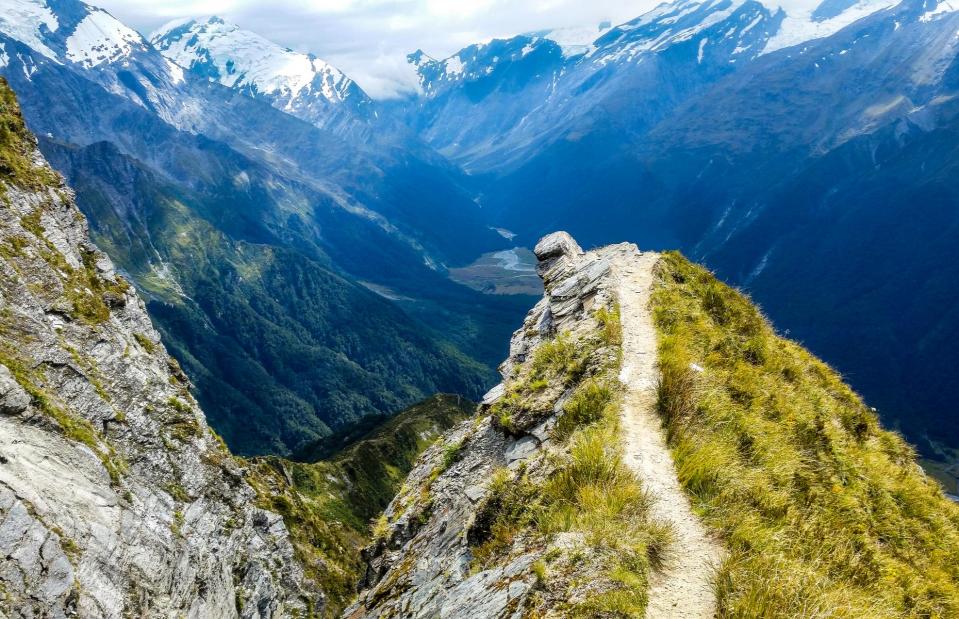
Ooriya Ron/Shutterstock
New Zealand has danger appeal aplenty for adrenaline junkies but the 11-mile (18km) two-day Cascade Saddle Route is a true test of stamina. The gruelling trek, which crosses from the West Matukituki valley to the Dart Valley in Otago's Mount Aspiring National Park, rewards hardy hikers with spectacular alpine views.
Cascade Saddle Route, New Zealand
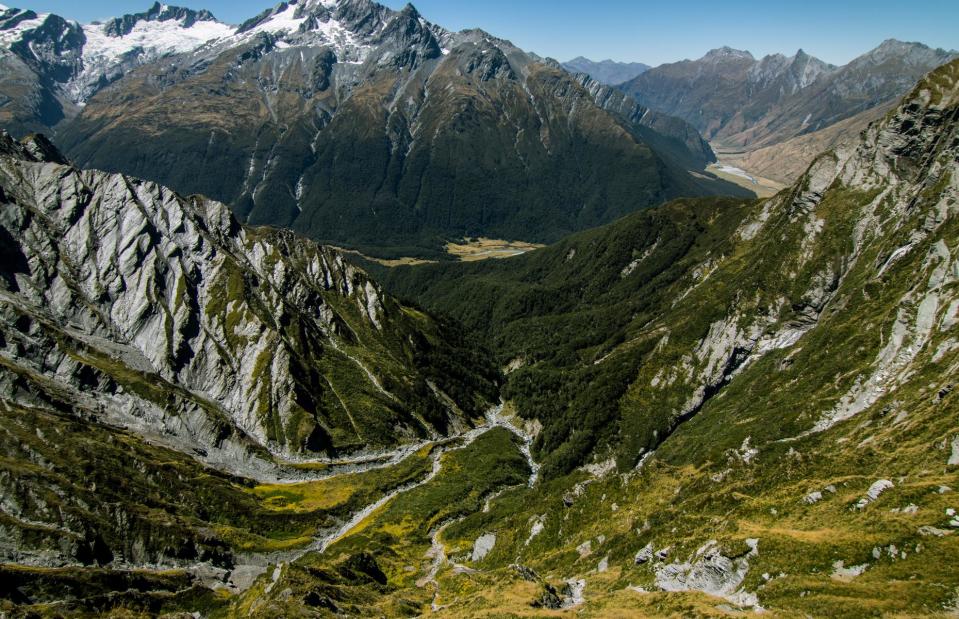
OW17/Shutterstock
The route is prone to adverse weather and multiple deaths have occurred from falls and exposure. The slopes can be slippery year-round, but only the foolhardy would attempt the Cascade Saddle in the winter when the risk of avalanches is high (June to November is the peak time). The New Zealand Mountain Safety Council advises that the route is only suitable for experienced 'trampers' with navigation and high-level backcountry skills.
Blue Hole, Egypt
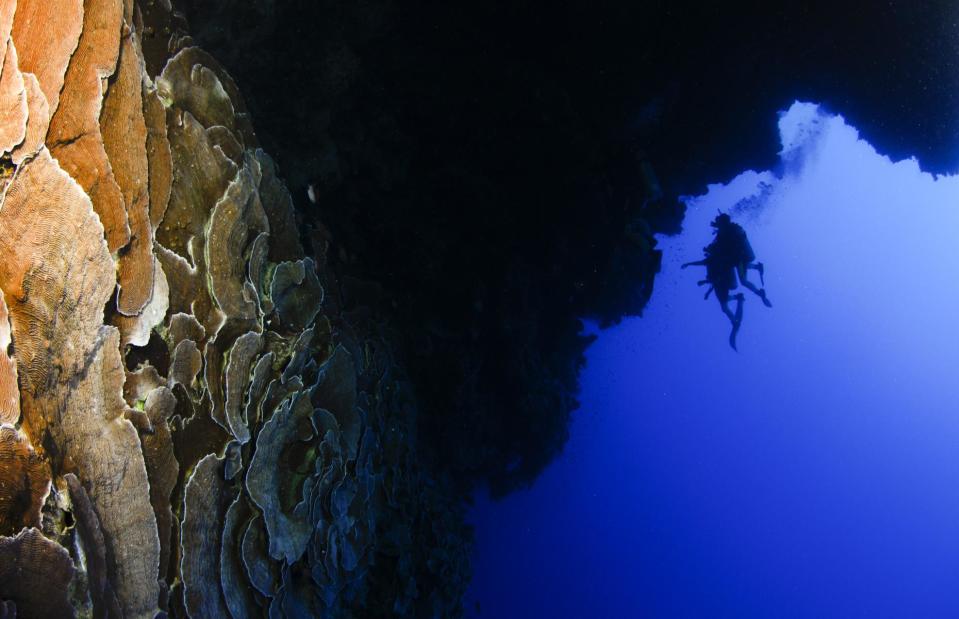
JonMilnes/Shutterstock
The Blue Hole is a favourite dive site of daredevils looking to test their mettle. North of Dahab in Egypt’s Red Sea, the sinkhole drops down to depths of around 300 feet (91m) with a notorious horizontal tunnel on its outdoor wall known as the Arch.
Blue Hole, Egypt
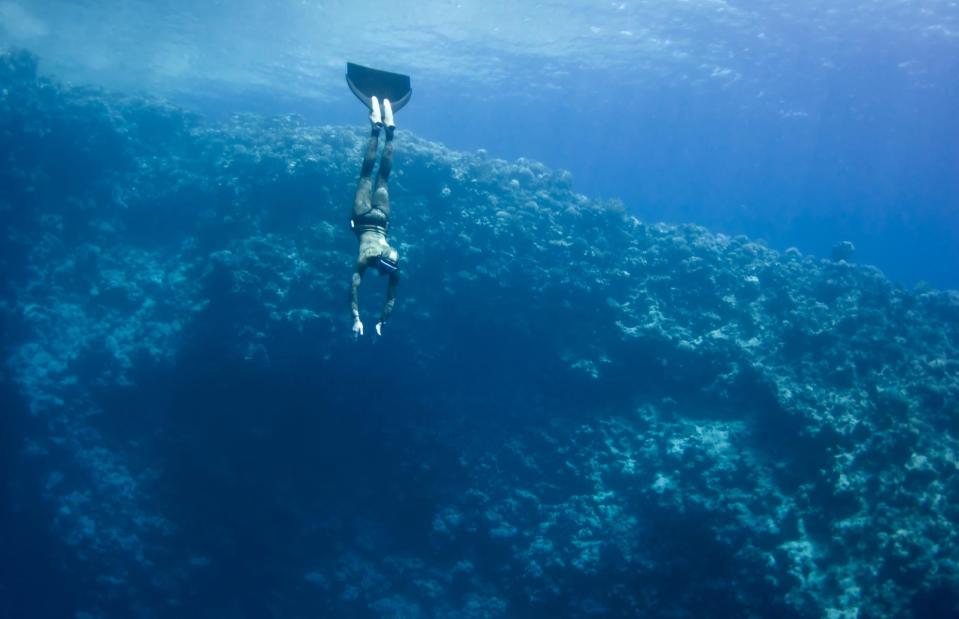
Sergey Orlov/ Shutterstock
The Red Sea is abundant with marine life that can be seen on shallow dives, but many explorers are lured into the depths of the Blue Hole due to its enticing reputation as one of the world’s most dangerous but beautiful dives. Most fatalities, including one of a world-renowned dive expert in 2017 (the tragic story of which was used for Netflix's acclaimed documentary The Deepest Breath in 2023), have occurred when divers have attempted to go through the Arch, which leads from the sinkhole into open water.
Anak Krakatau, Indonesia
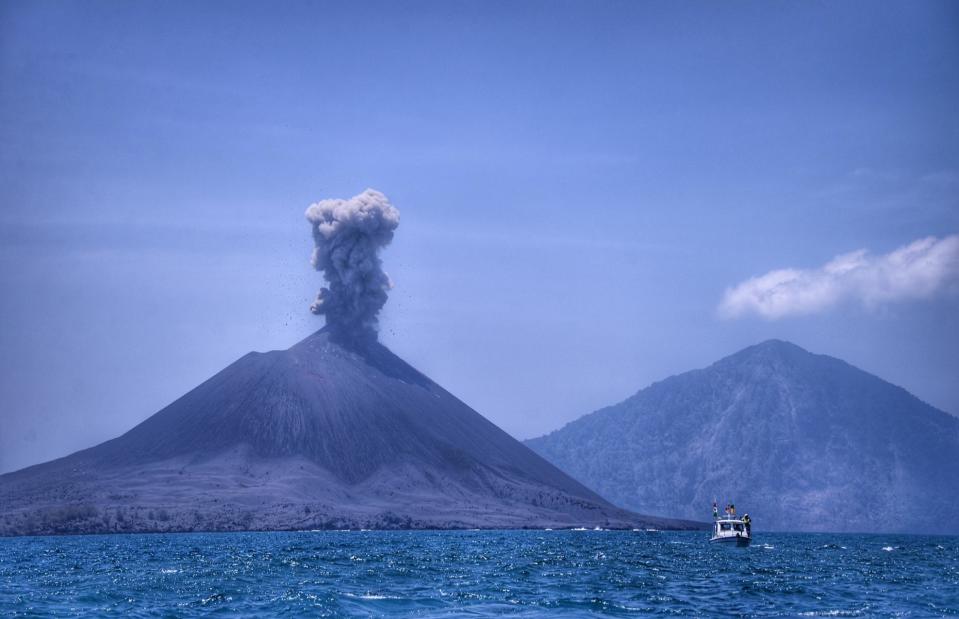
RethaAretha/Shutterstock
This volcanic island in Indonesia’s Sunda Strait formed after its namesake volcano had one of the deadliest eruptions in history. The immense ash clouds and the powerful tsunamis created by the historic explosion of Krakatau in 1883 killed around 36,000 people. The strength of the eruption meant the original volcano largely collapsed, but some decades later, a new one was born from the crater. It’s known as Anak Krakatau or 'Child of Krakatau'.
Anak Krakatau, Indonesia
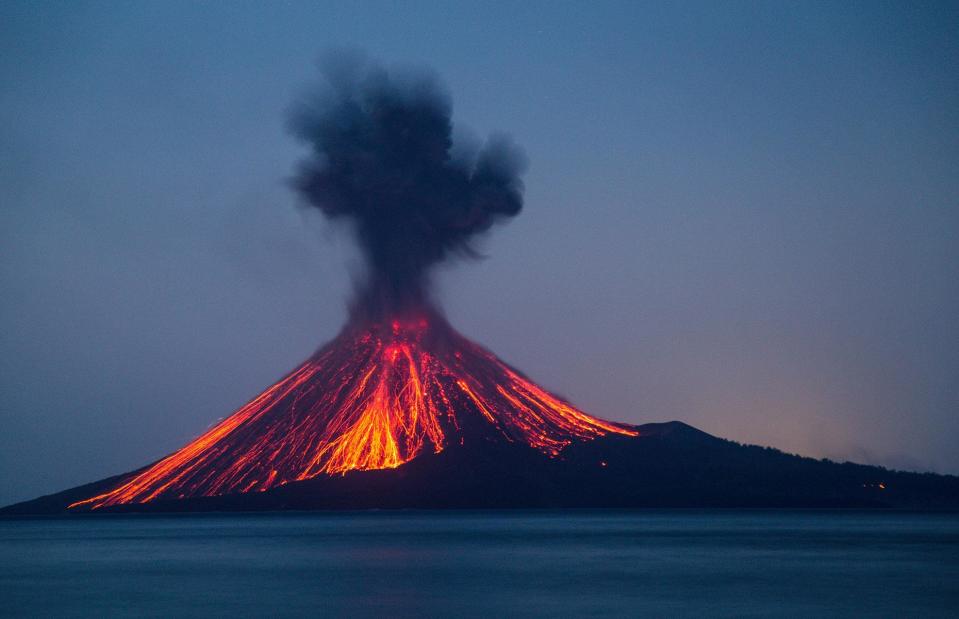
Deni_Sugandi/Shutterstock
Boat tours take people to visit the awe-inspiring active volcano, with groups sometimes camping right on the black sand beach of the volcanic island – depending on activity – or neighbouring isles. A deadly tsunami in Indonesia in December 2018 was triggered by part of Anak Krakatau sliding into the ocean after it erupted under water. Further eruptions were reported in 2023.
Annapurna I, Nepal
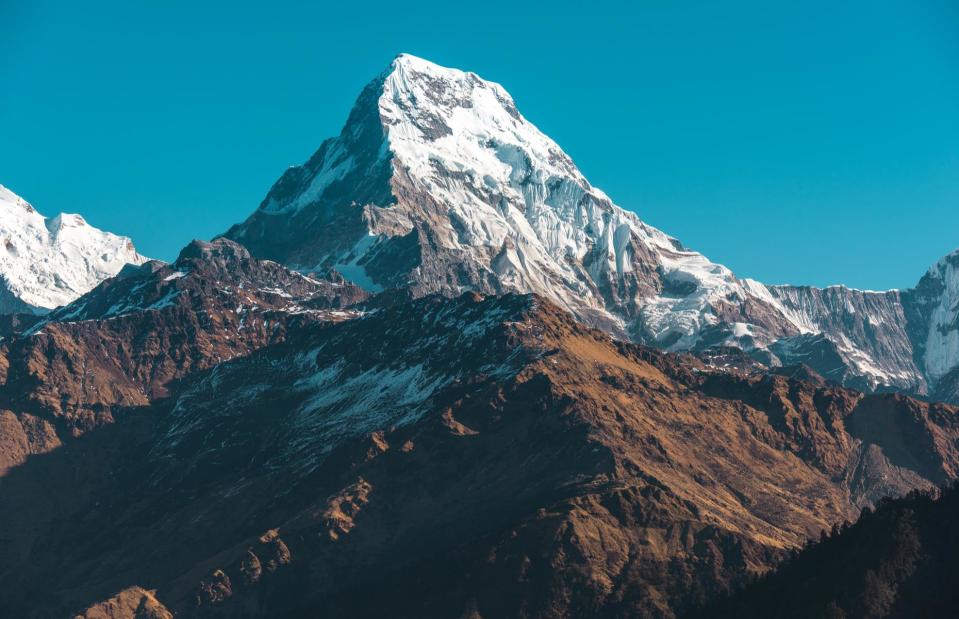
Bon Appetit/Shutterstock
At 26,545 feet (8,091m) at its highest point, the Annapurna range has the 10th-highest mountain on the planet. It may be overshadowed by its lofty neighbour Everest, but Annapurna I is notoriously difficult to climb. In fact, it’s ranked as the world’s most deadly peak for climbers due to its high fatality rate. According to NASA's Earth Observatory, Annapurna I has the highest fatality rate (32% of climbers) of any mountain.
Annapurna I, Nepal
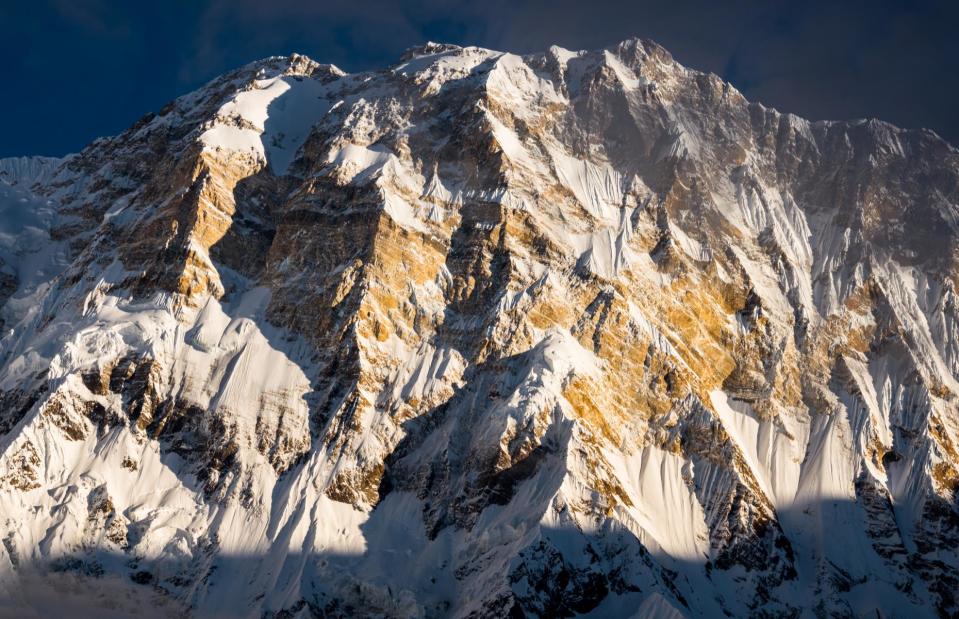
Jonathan A. Mauer/Shutterstock
Climbers attempting to reach Annapurna’s summit must push their physical and mental endurance to the limits on the punishing mountain where deadly snowstorms, rockfalls and avalanches are common. Its steep slopes are notoriously difficult to summit due to its especially treacherous topography, inhospitable conditions and high altitude.
Everest, Nepal
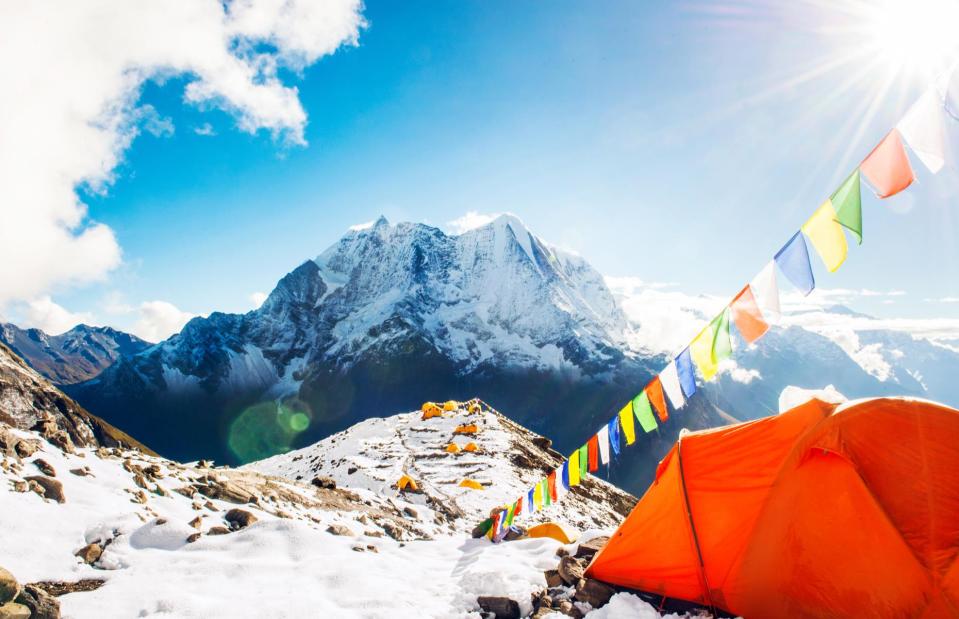
Daniel Prudek/Shutterstock
Soaring to 29,032 feet (8,849m), Mount Everest is a global symbol of expedition and adventure. Scaling the world’s highest mountain is seen as the ultimate test of endurance by climbers. While it’s not statistically the world’s most dangerous peak, it is fraught with extreme hazards (avalanches, deadly crevices, ice flows and debilitating altitude sickness). Since 1922, more than 300 people have perished in an attempt to scale the summit.
Everest, Nepal
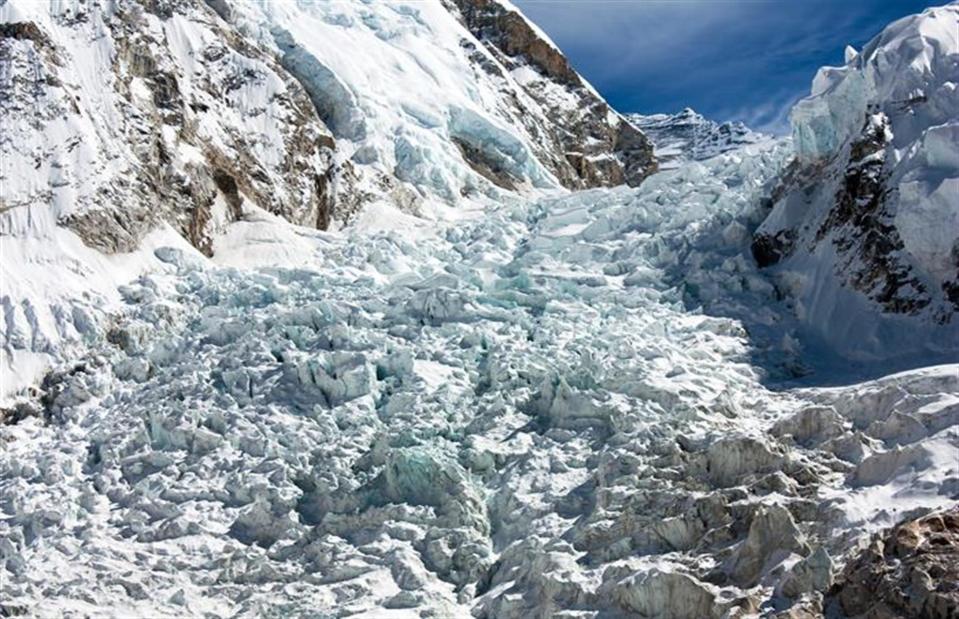
Vixit/Shutterstock
The Khumbu Icefall, a passage of constantly falling ice and crevasses, is one of the most perilous parts facing those on the popular South Col route. The next challenge is the so-called 'death zone', the highest part of the mountain with low levels of oxygen, and where most fatalities occur due to high altitude sickness. In the 2023 climbing season, up to 17 people died, making it one of the worst years on record. There were reports of extreme weather, inexperienced climbers and dangerous overcrowding in the 'death zone'.
Réunion
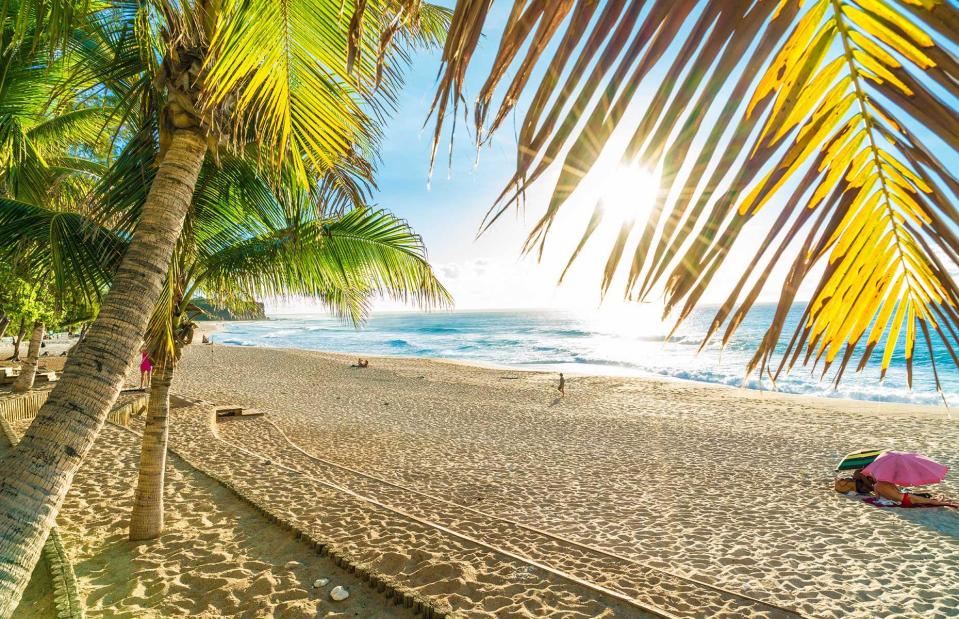
Balate Dorin/Shutterstock
The beaches of this French enclave in the Indian Ocean are exquisite and remarkably crowd-free, especially compared with glitzier neighbour Mauritius. Known for its epic waves and laid-back atmosphere, Réunion is also a surfing mecca for those in the know. Unfortunately, it's also one of the most shark-infested spots in the world.
Réunion
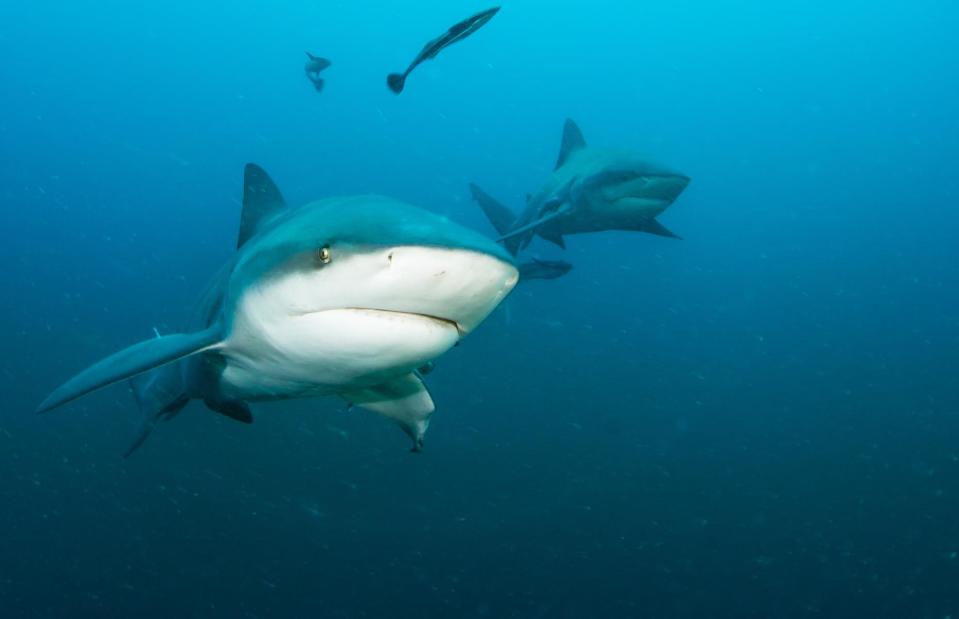
Stefan Pircher/Shutterstock
Two deaths occurred in 2019, when a fisherman was killed by a bull shark in January and a surfer died in May. The Indian Ocean island has recorded 24 attacks and 11 fatalities since 2011. Saint-Paul on the west coast has seen the most attacks with 19 since 1981, including a 15-year-old snorkeller who was killed just off the beach in 2013. It led to the government banning swimming and surfing at any beaches without shark nets.
North Yungas Road, Bolivia
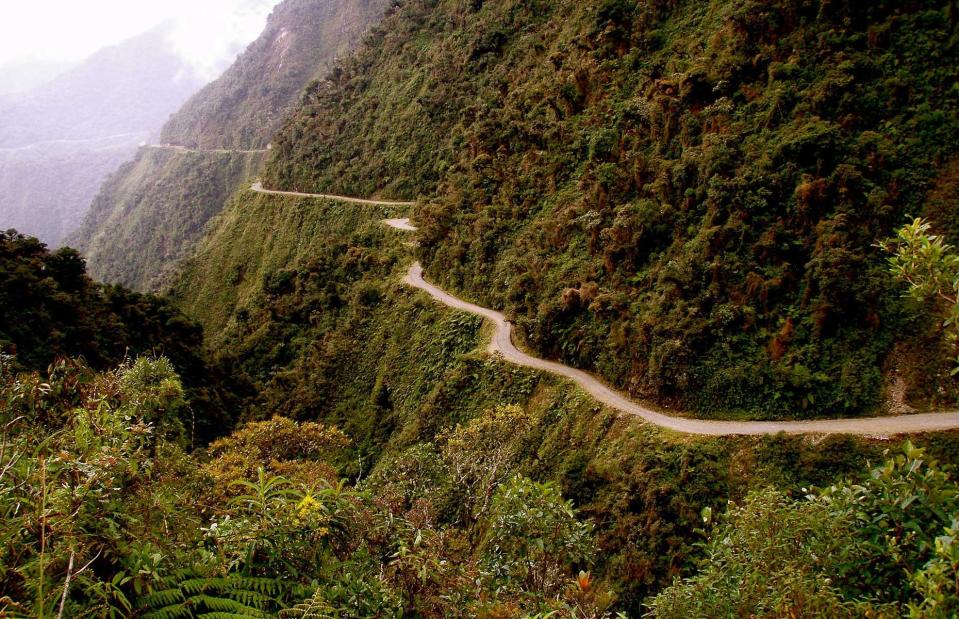
Mark Tucan/Shutterstock
Plummeting down one of the world’s most dangerous roads on a bike may not be everyone’s idea of fun but North Yungas Road, which winds through the Cordillera Oriental mountain chain just near La Paz, has become one of the world’s most thrilling mountain bike rides. There's good reason it's known starkly as Death Road.
North Yungas Road, Bolivia
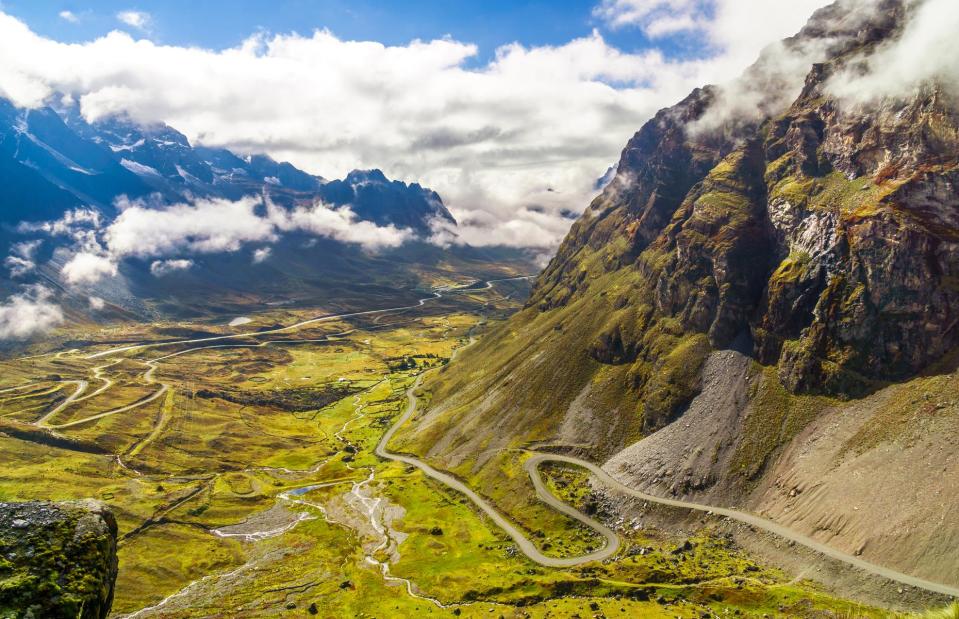
Streetflash/Shutterstock
Thankfully a new road allows larger vehicles to bypass some of the notoriously narrow route's most dangerous sections – but cyclists can still risk their lives on them should they wish. Riders are in for an exhilarating but bumpy 40-mile (64km) descent with sheer cliff drops just inches away and vertiginous views of the Amazon rainforest to distract them. While there are no decisive figures, it’s been reported that 18 cyclists have died in recent times on the deadly road.
Boiling Lake, Dominica
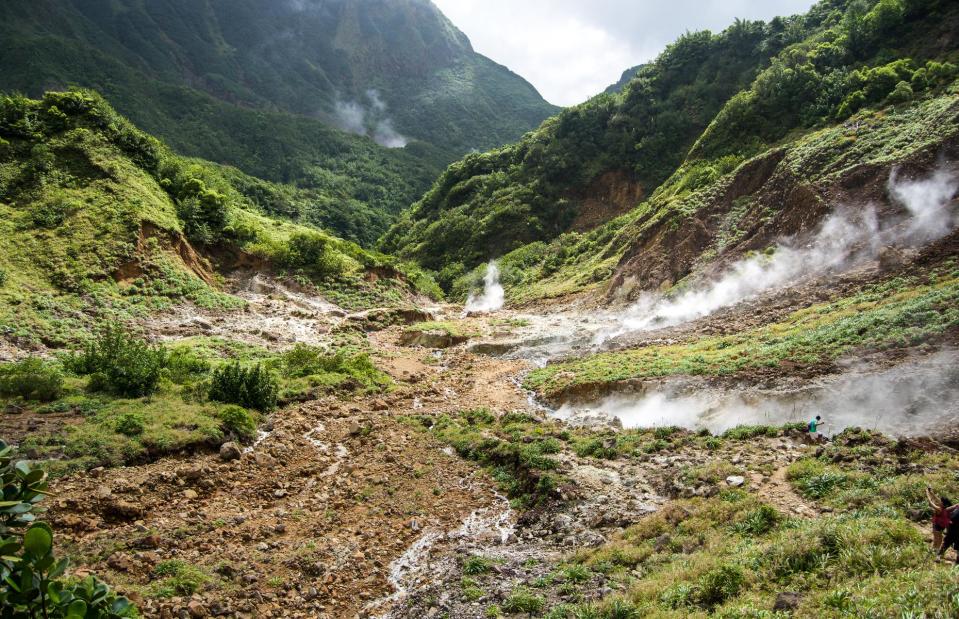
Joseph Thomas Photography/Shutterstock
Known as 'nature island', Dominica is one of the most scenic and unspoilt countries in the Caribbean. A strenuous but scenic hike through the lush rainforest of Morne Trois Pitons National Park and into the Valley of Desolation will take you to see one of the island's most intriguing and potentially lethal attractions – the so-called Boiling Lake.
Boiling Lake, Dominica
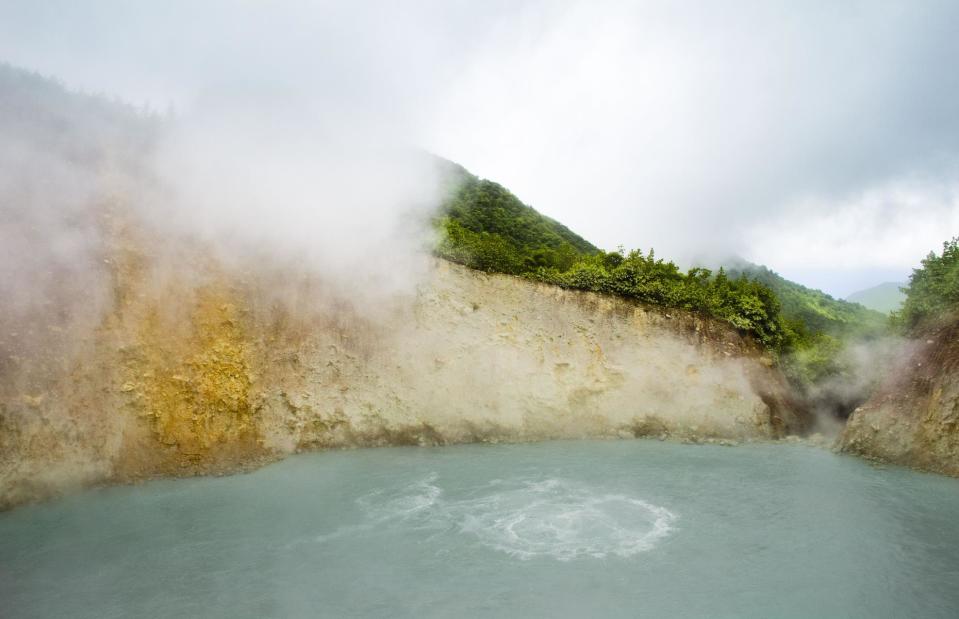
Emily Eriksson/Shutterstock
The steaming lake is actually a flooded fumarole – a crack in the Earth’s crust – and has been known to drain entirely or for its water to suddenly cool. But when it’s at its hottest, the murky water spits and bubbles like a cauldron. While it might look enticing, it can spray out scaldingly hot water, so it's best not to get too close.
The Canadian Rockies, Canada
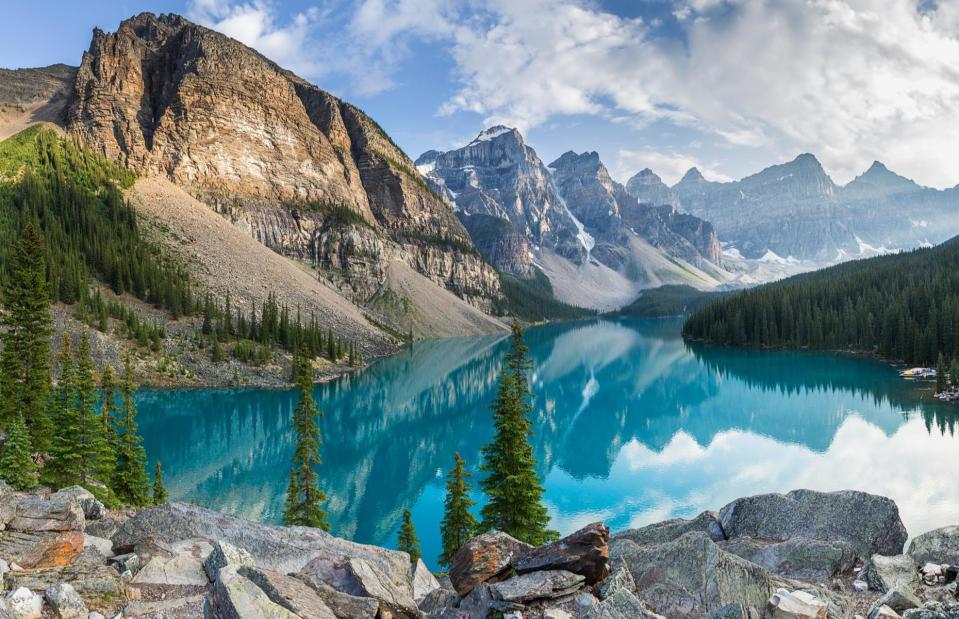
r.classen/Shutterstock
From avalanches and rockfalls to potential encounters with mountain lions and grizzly bears, the Canadian Rockies are fraught with danger. Of course, this frisson of jeopardy is one of the reasons why the stunning mountains have become a year-round adventure playground for thrill seekers.
The Canadian Rockies, Canada
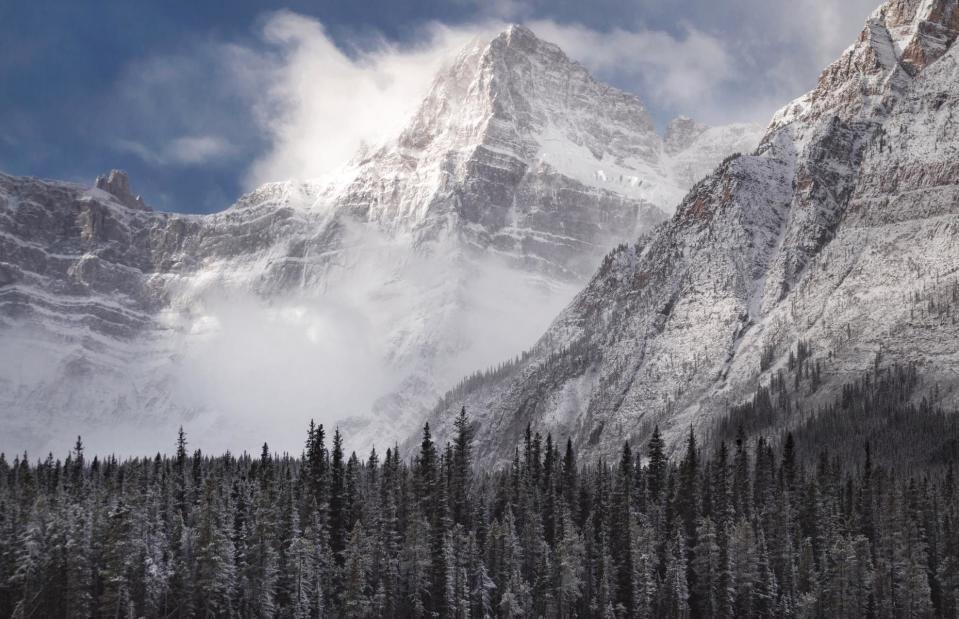
sixfournorth/Shutterstock
Winter in the Rockies offers up numerous high-adrenaline and high-danger activities, including off-piste skiing, ice climbing and mountaineering. The mountain range’s severe weather conditions, unpredictability and remoteness all add up to make this a treacherous place to be. In 2019, three of the world’s best-known mountaineers were killed in an avalanche when attempting to scale a remote face of Mount Howse in Alberta’s Banff National Park (pictured).
Trolltunga, Norway
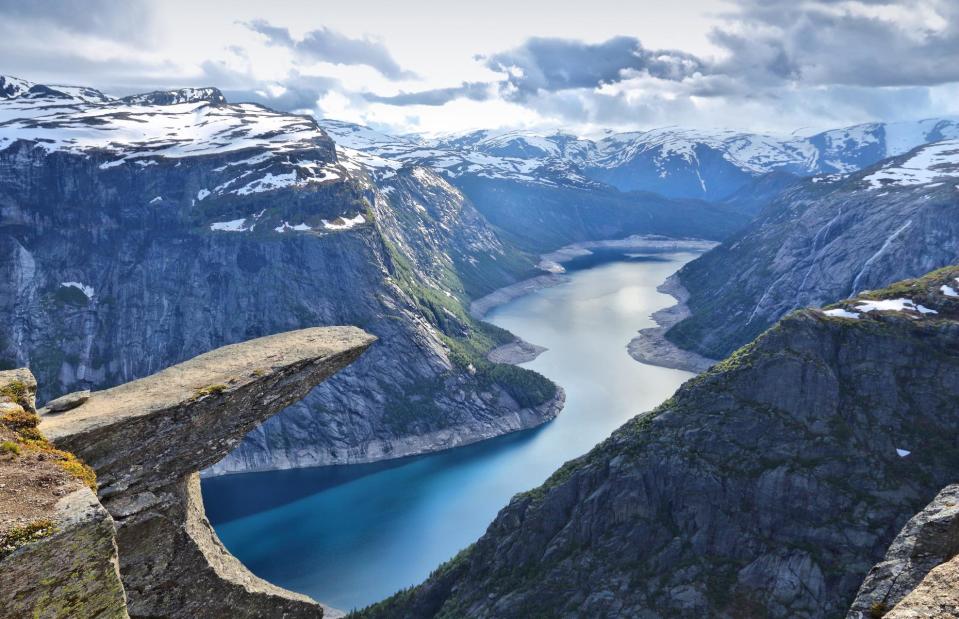
Tupungato/Shutterstock
This striking and otherworldly rock formation in western Norway has become a magnet for selfie-taking hikers. At around 3,600 feet (1,097m) above sea level, the only way to get onto the precarious ledge – which overhangs Ringedalsvatnet Lake – is via a demanding high-mountain-terrain hike. It’s a round trip of 17 miles (28km) from the main trailhead in Skjeggedal or 12.5 miles (20km) from the trailhead at Mågelitopp.
Trolltunga, Norway
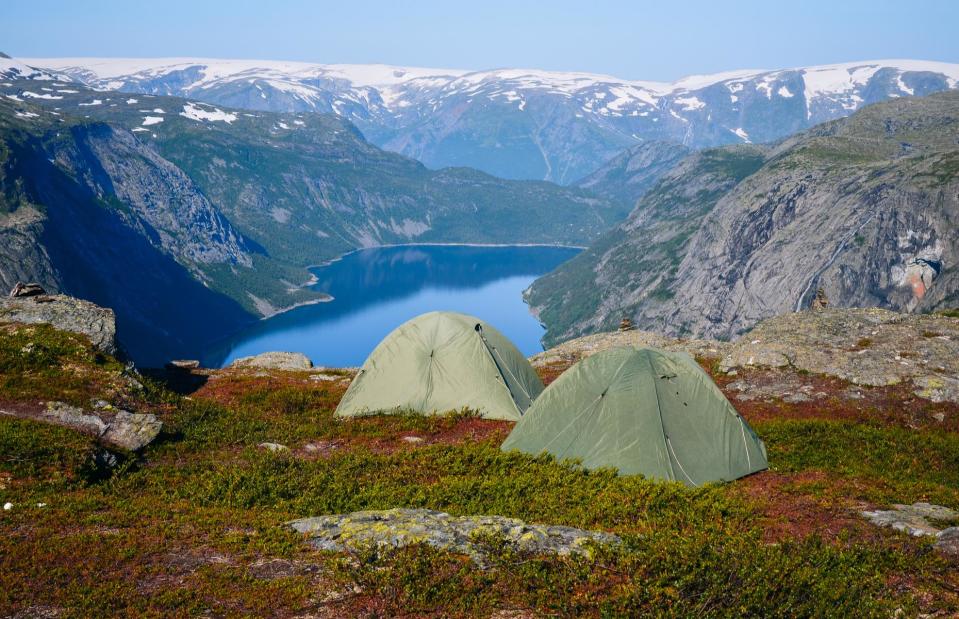
Creative Force Studio/Shutterstock
Some people camp so they can be there to see the rock at sunrise or sunset. Tourists can stand (or sit) right on the edge of Trolltunga (the troll’s tongue), at their own risk. Sadly, an Australian woman slipped and fell to her death here in 2015. Visitors are advised to be mindful of the often strong winds that whip around this isolated spot. Although hiking to Trolltunga alone is permitted from June to the end of August, guides are strongly recommended. They are mandatory for hikers hoping to see the spectacular cliff in winter.
Yucatan Cenotes, Mexico
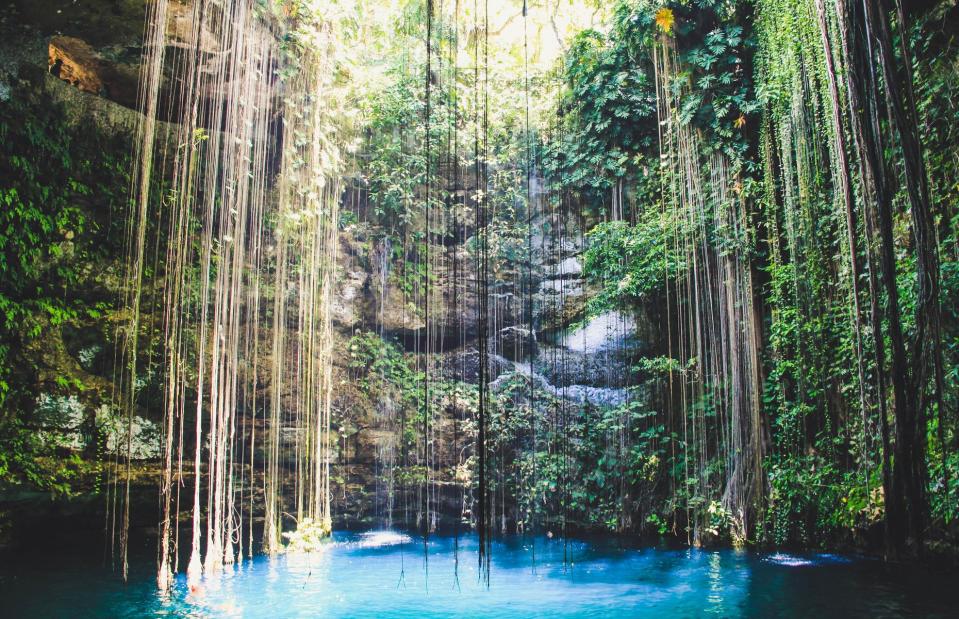
Litoshenko Oleksii/Shutterstock
Beneath the steamy jungle in Mexico’s Yucatan Peninsula lie three of the longest underwater cave systems in the world. These largely unmapped flooded cave systems have become a magnet for advanced divers who come to navigate their way between the natural sinkholes known as cenotes, which were considered deeply spiritual places by the ancient Maya. Sadly some divers have perished in these stunning freshwater pools, including one death in 2022.
Yucatan Cenotes, Mexico
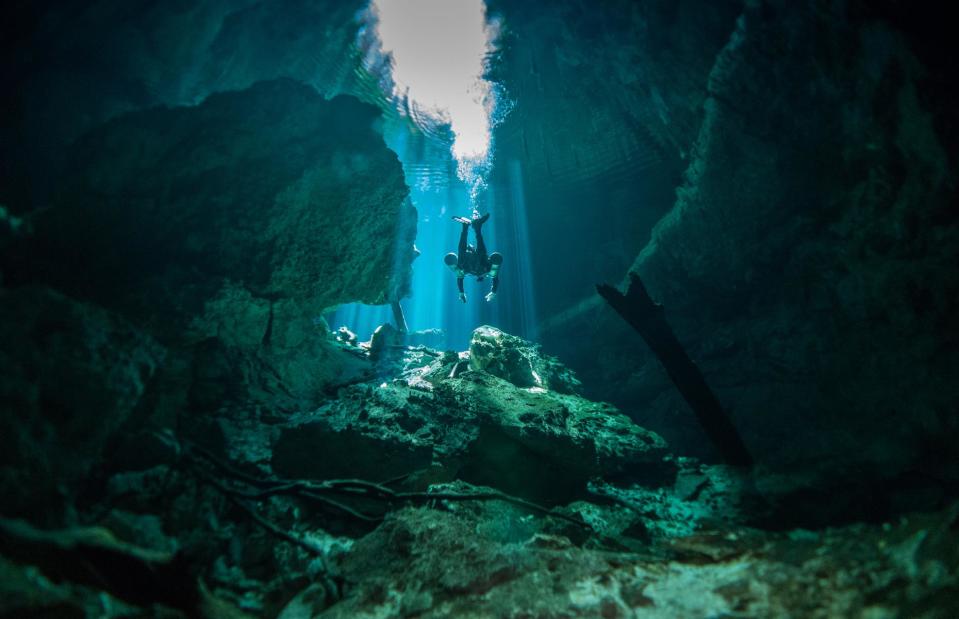
Joana Villar/Shutterstock
Darkness, disorientation, becoming entangled in vegetation and squeezing through tight spaces are just some of the perils facing divers as they explore. But the rewards are plentiful: extraordinary fish and spectacular rock formations, stalactites, stalagmites and fossils, lit by shafts of light filtering down from the cenote openings. It’s possible to swim and snorkel in the caverns too, but those wishing to dive deep within the systems need to undergo extensive cave diver training.
Fagradalsfjall, Iceland
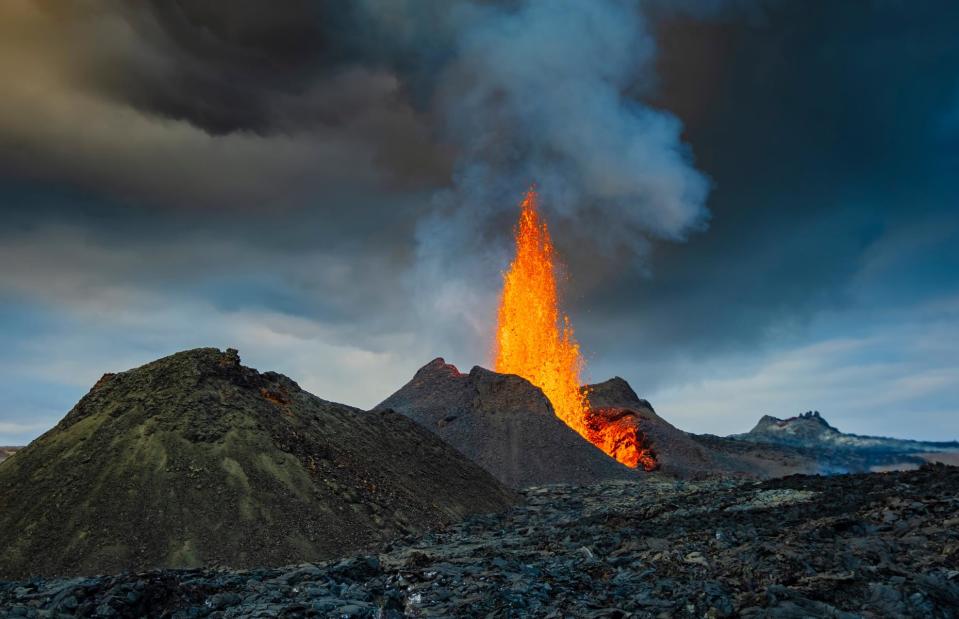
Morphius Film/Shutterstock
Seeing the sheer power of Earth up close has lured people to Iceland’s Fagradalsfjall volcano, which has erupted multiple times in 2023. Set in an isolated position on the Reykjanes Peninsula, the active volcano poses little threat to people or infrastructure but it is an electrifying sight. In 2021, the opening of a 1,640-foot-long (500m) fissure marked what was the first eruption on the Reykjanes Peninsula in over 800 years.
Fagradalsfjall, Iceland
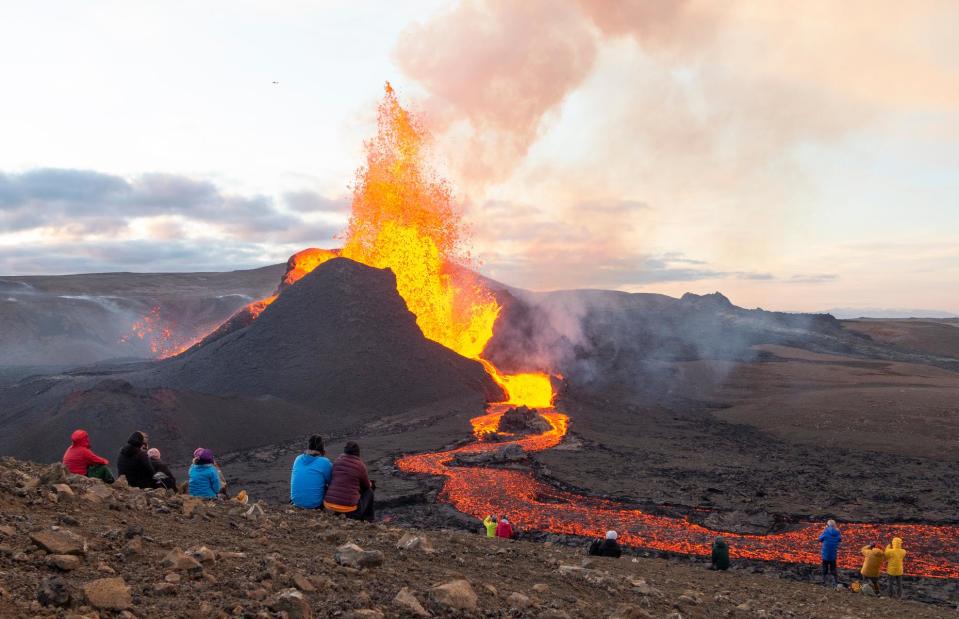
Thorir Ingvarsson/Shutterstock
Expert-led helicopter and hiking tours take people to witness this volcano erupt from a safe (but close) vantage point. Unpredictable and hard to reach, volcanoes are fraught with dangers from toxic gases and, of course, the risk of eruption. The deaths of several people at New Zealand’s White Island, a popular tourist destination, in 2019 brought the dangers of volcano tourism sharply into focus.

